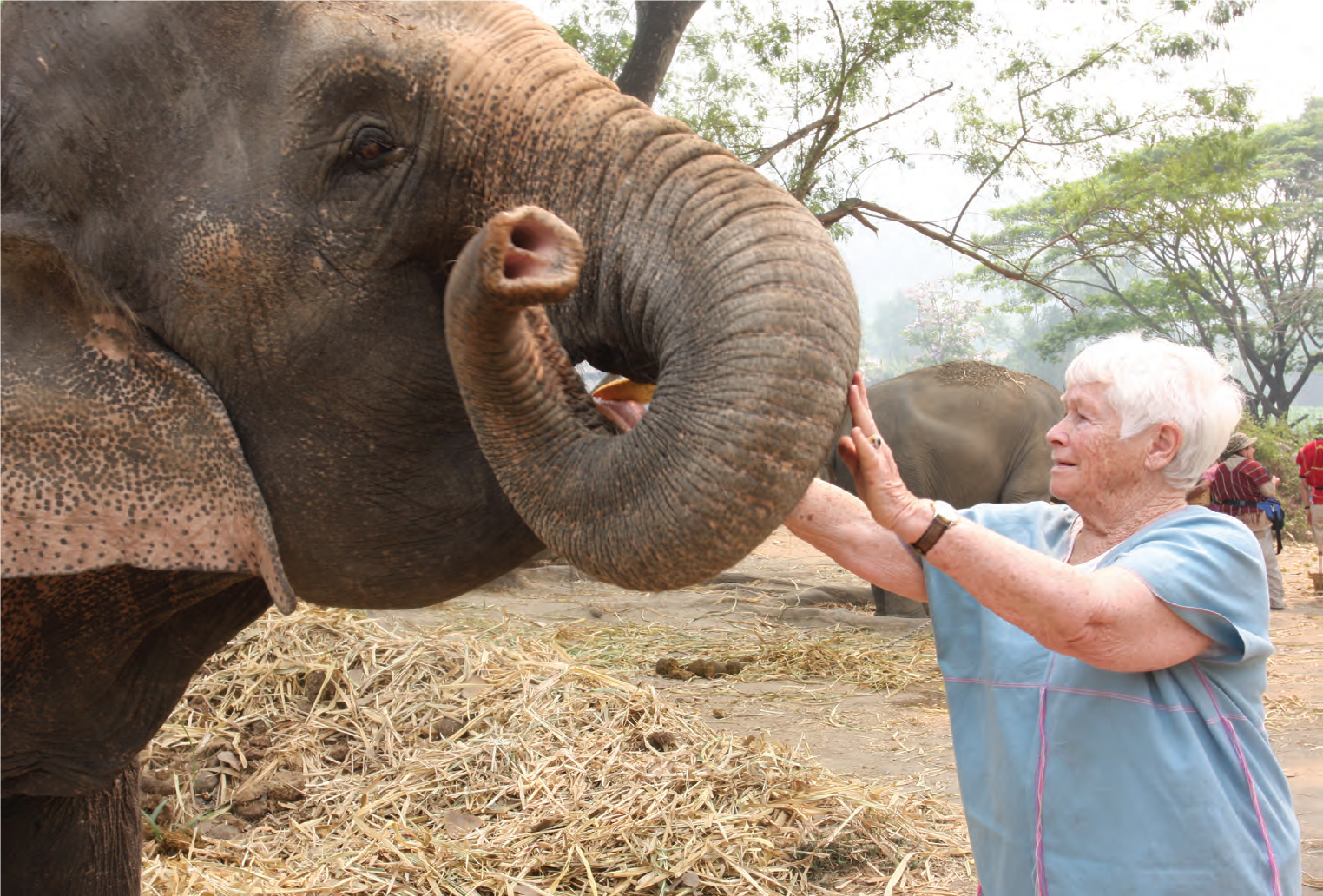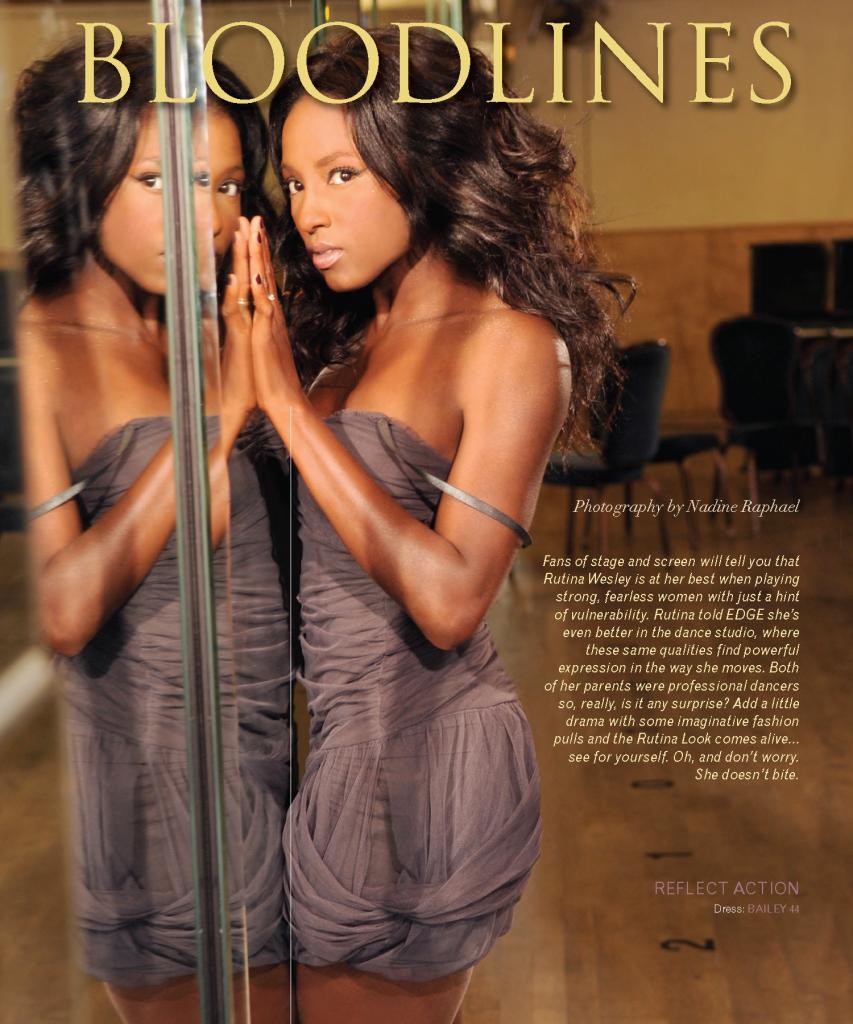
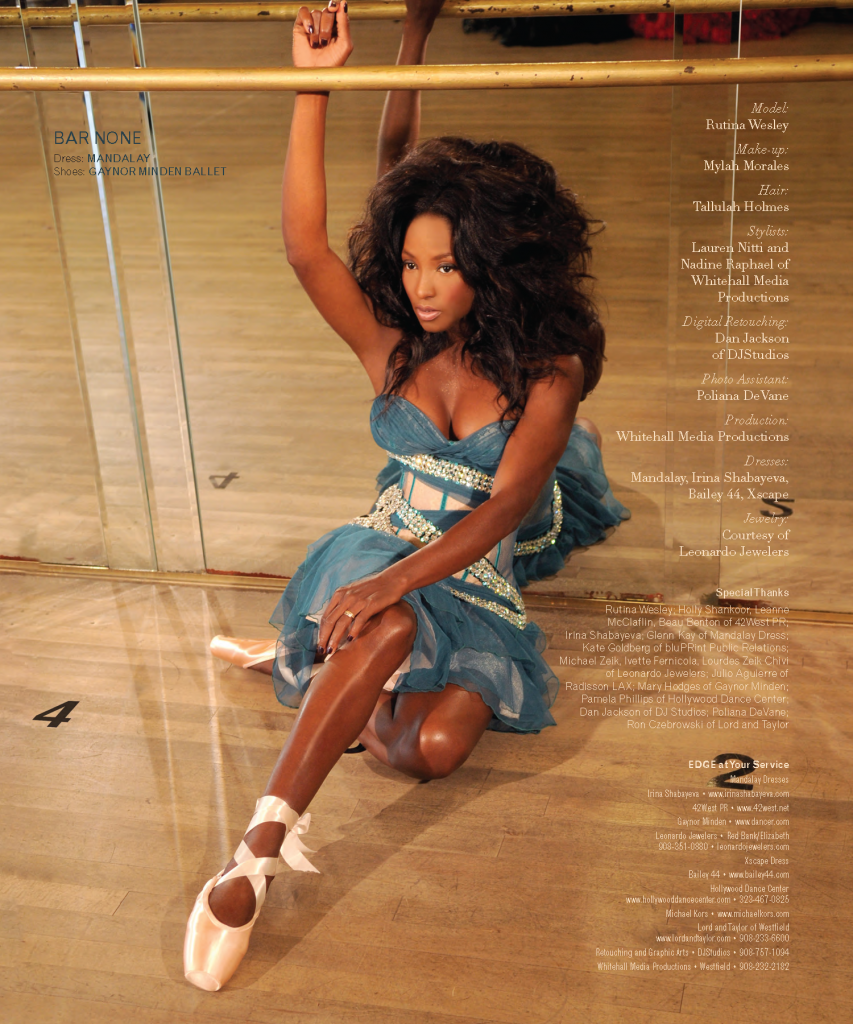
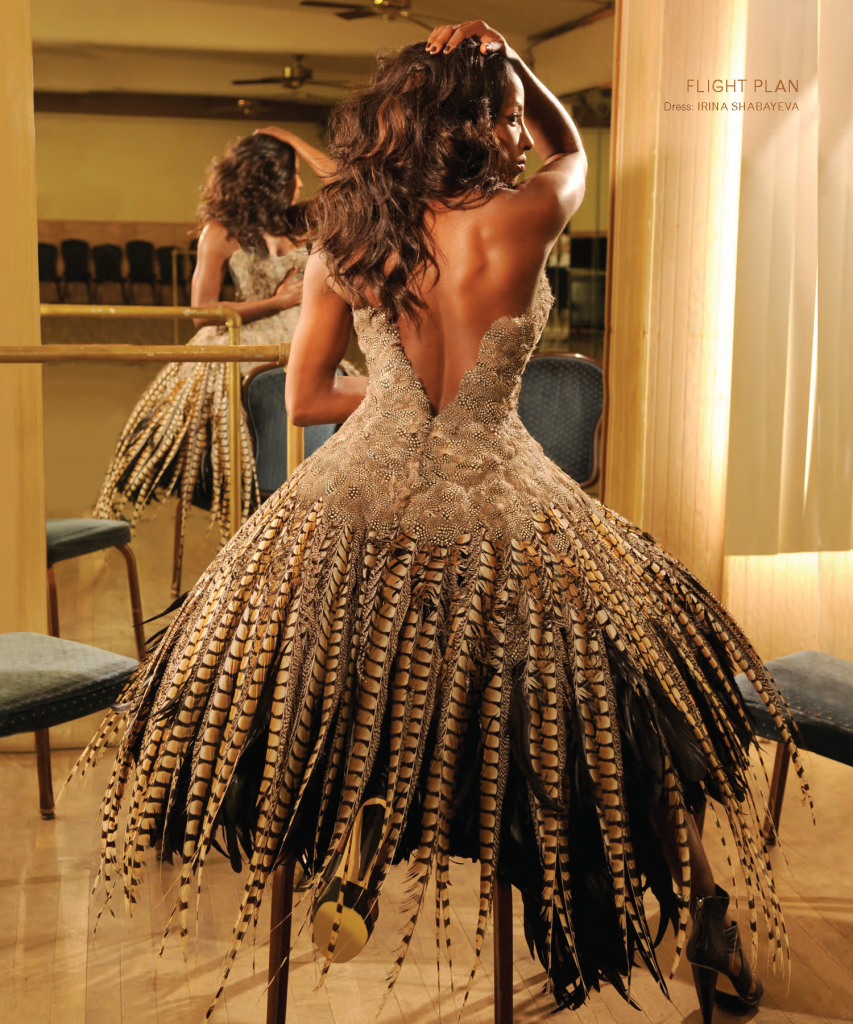

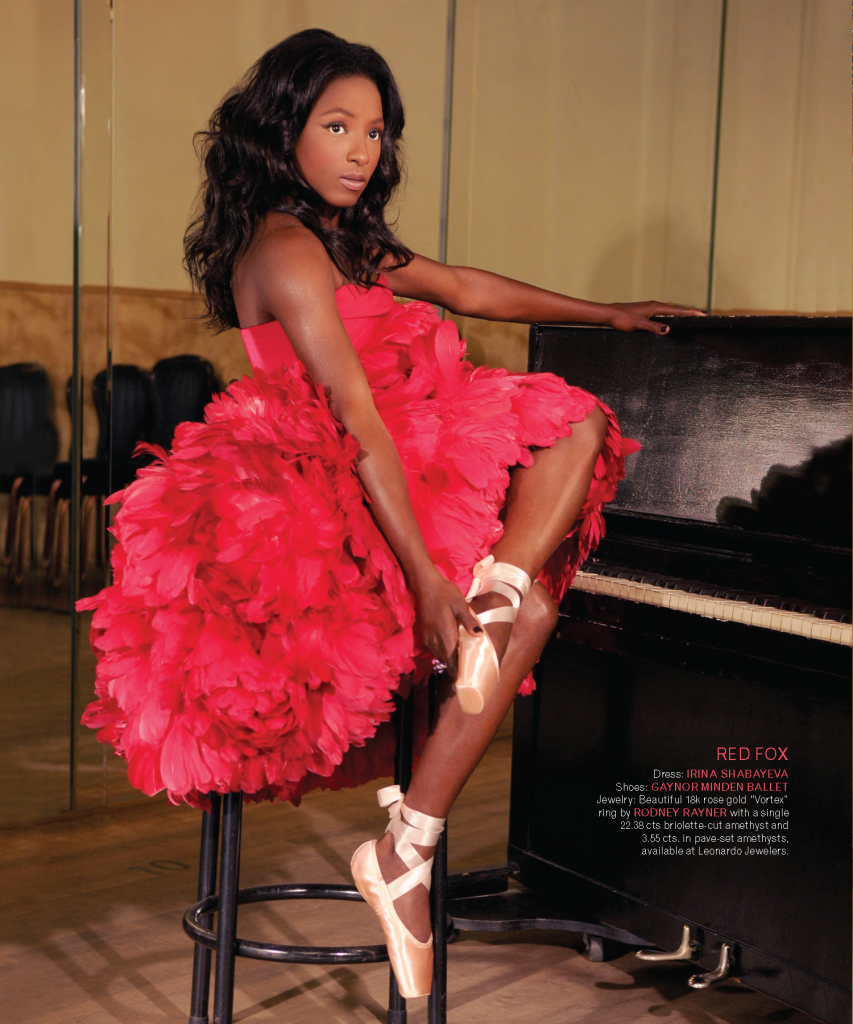
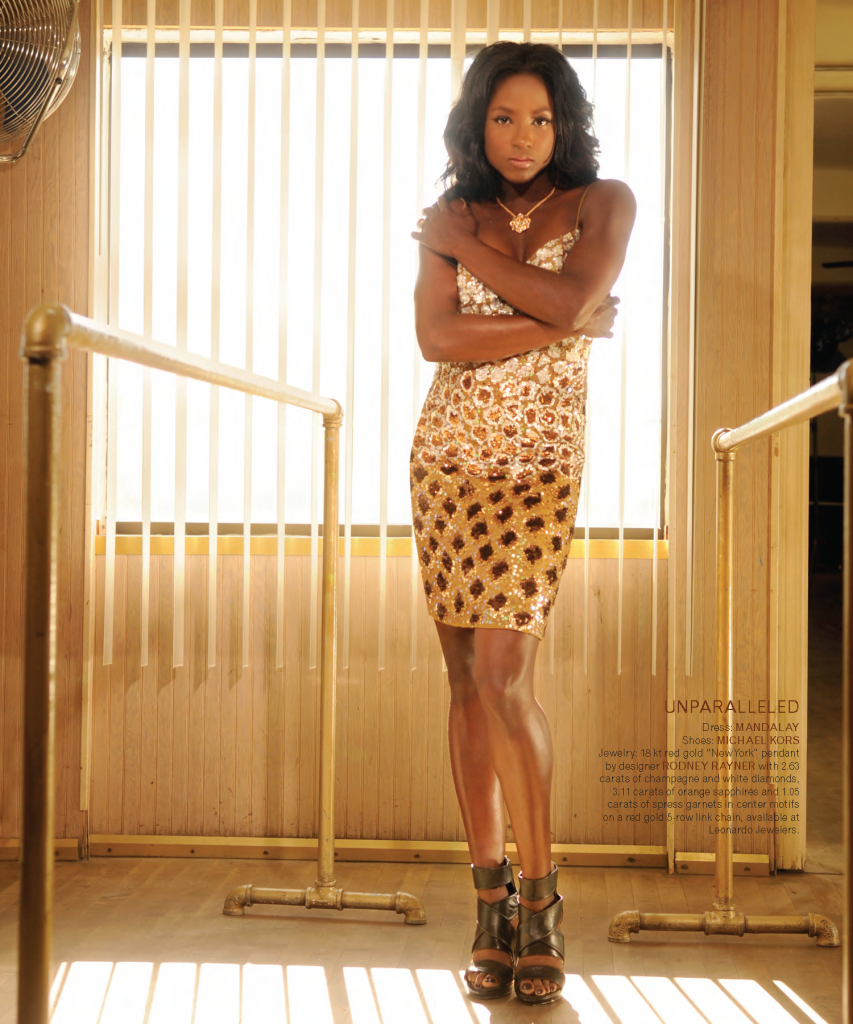
A lifelong appetite for reading begins with that first taste in the classroom.
 A great debate is raging in the tech world. It concerns the type of devices today’s youth will be using to read books a decade from now. Will there be a way-cooler version of the iPad? Will smart phones become personal libraries? Will the printed page magically appear in space a foot or two away? Fun stuff. Star Trek stuff—going where no book has gone before. But these flights of fancy tend to overlook a more immediate issue concerning New Jersey’s parents and educators: Will tomorrow’s 20-somethings be reading books at all? Before sounding the alarm bell too loudly, it’s worth noting that New Jersey students, as a group, mop up on just about every standardized test that measures reading proficiency. However, proficiency does not guarantee a lifelong love of reading. Every scrap of evidence available on the reading habits of adults tells us that they echo their experience with literature in grade school and high school. Indeed, kids who regard reading
A great debate is raging in the tech world. It concerns the type of devices today’s youth will be using to read books a decade from now. Will there be a way-cooler version of the iPad? Will smart phones become personal libraries? Will the printed page magically appear in space a foot or two away? Fun stuff. Star Trek stuff—going where no book has gone before. But these flights of fancy tend to overlook a more immediate issue concerning New Jersey’s parents and educators: Will tomorrow’s 20-somethings be reading books at all? Before sounding the alarm bell too loudly, it’s worth noting that New Jersey students, as a group, mop up on just about every standardized test that measures reading proficiency. However, proficiency does not guarantee a lifelong love of reading. Every scrap of evidence available on the reading habits of adults tells us that they echo their experience with literature in grade school and high school. Indeed, kids who regard reading  as an unpleasant reality of their education— or worse, as cruel and unusual punishment that steals precious time away from video games, social networking and VH1—are unlikely to pick up a decent book after the age of 20. Conversely, kids who encounter great books and great teachers, or who are at least challenged in some way by important literature, are not only far more inclined to be eager readers throughout adulthood. They are much more likely to see the world in a layered and sophisticated way. Given the powerful pull of competing media, when is the right time to start introducing great books to young readers? Although educators may quibble about theories and practices, on this one point, there is near-universal agreement. Harriet Marcus, chair of the Upper School English Department at Oak Knoll School of the Holy Child in Summit, insists that it is “never too early to present the great universal ideas to children.” Jane Freeman, of Solomon Schechter Day School in West Orange, maintains that great literature should be introduced from the moment “a child can understand the spoken word.” Noreen Andrews, of Union Catholic in Scotch Plains, concurs. “At birth,” she smiles. Actually, there’s some truth to this idea. “Babies are introduced to great literature when they are sung to and read to as infants,” points out Sister Regina Martin, Principal of Mother Seaton Regional High School in Clark. She says that “while the books they hear are not great classics per se, babies learn to love the sound of literature, whether it is from a song, a nursery rhyme, or a bedtime story.” Once a school gets its hands on a young reader, that’s when things can go very right or very wrong. Talented and impassioned leadership is a must; even for the most taciturn of students, a teacher’s enthusiasm for the material ultimately will prove contagious. An instructor whose primary goal is to plow through the material, test the kids and then move on, is likely to leave uninspired readers in his or her wake. From a parent’s perspective, there is only so
as an unpleasant reality of their education— or worse, as cruel and unusual punishment that steals precious time away from video games, social networking and VH1—are unlikely to pick up a decent book after the age of 20. Conversely, kids who encounter great books and great teachers, or who are at least challenged in some way by important literature, are not only far more inclined to be eager readers throughout adulthood. They are much more likely to see the world in a layered and sophisticated way. Given the powerful pull of competing media, when is the right time to start introducing great books to young readers? Although educators may quibble about theories and practices, on this one point, there is near-universal agreement. Harriet Marcus, chair of the Upper School English Department at Oak Knoll School of the Holy Child in Summit, insists that it is “never too early to present the great universal ideas to children.” Jane Freeman, of Solomon Schechter Day School in West Orange, maintains that great literature should be introduced from the moment “a child can understand the spoken word.” Noreen Andrews, of Union Catholic in Scotch Plains, concurs. “At birth,” she smiles. Actually, there’s some truth to this idea. “Babies are introduced to great literature when they are sung to and read to as infants,” points out Sister Regina Martin, Principal of Mother Seaton Regional High School in Clark. She says that “while the books they hear are not great classics per se, babies learn to love the sound of literature, whether it is from a song, a nursery rhyme, or a bedtime story.” Once a school gets its hands on a young reader, that’s when things can go very right or very wrong. Talented and impassioned leadership is a must; even for the most taciturn of students, a teacher’s enthusiasm for the material ultimately will prove contagious. An instructor whose primary goal is to plow through the material, test the kids and then move on, is likely to leave uninspired readers in his or her wake. From a parent’s perspective, there is only so  much influence you can exert when it comes to picking a teacher to foster a love of books. Whether your child is in public or private school, it’s a hiring and firing issue that is out of your hands. Where parents can affect the outcome (besides encouraging reading at home, of course) is by asking questions about a school’s class size and format. Classroom discussion is absolutely, positively the number one factor when it comes to understanding and appreciating literature. Here, the private schools—by virtue of their smaller class sizes—typically have a distinct edge. Andrews says that small-group discussions “enable students and teachers to dig deeper for the full experience.” Karen Calta, Assistant Directress at Mount St. Mary Academy in Watchung, adds that they are “invaluable in that they serve students well in many academic areas.” Calta explains that students across a wide range of subjects are encouraged at Mount St. Mary to develop their own interpretations, while teachers serve as guides. Andrew Webster of The Wardlaw-Hartridge School in Edison agrees that an understanding and appreciation of literature is not merely a means for improving academic performance in English. “Done properly,” he says, “it enriches the lives of students and their understanding of what it means to be human. It allows them to step beyond their own experience, develop empathy, and form careful judgment.” According to Nat Conard, Headmaster of The Pingry School, literary discussion does more
much influence you can exert when it comes to picking a teacher to foster a love of books. Whether your child is in public or private school, it’s a hiring and firing issue that is out of your hands. Where parents can affect the outcome (besides encouraging reading at home, of course) is by asking questions about a school’s class size and format. Classroom discussion is absolutely, positively the number one factor when it comes to understanding and appreciating literature. Here, the private schools—by virtue of their smaller class sizes—typically have a distinct edge. Andrews says that small-group discussions “enable students and teachers to dig deeper for the full experience.” Karen Calta, Assistant Directress at Mount St. Mary Academy in Watchung, adds that they are “invaluable in that they serve students well in many academic areas.” Calta explains that students across a wide range of subjects are encouraged at Mount St. Mary to develop their own interpretations, while teachers serve as guides. Andrew Webster of The Wardlaw-Hartridge School in Edison agrees that an understanding and appreciation of literature is not merely a means for improving academic performance in English. “Done properly,” he says, “it enriches the lives of students and their understanding of what it means to be human. It allows them to step beyond their own experience, develop empathy, and form careful judgment.” According to Nat Conard, Headmaster of The Pingry School, literary discussion does more  than motivate, challenge and engage. In a learning environment that embraces diversity (Pingry counts itself among the New Jersey schools that draw from a particularly broad cultural, religious and socioeconomic spectrum), it also fosters an appreciation for multiple viewpoints. “In class discussions, our students hear ideas from students whose backgrounds are very different than their own,” Conard says. Of course, the “must-reads” provide plenty of fodder for class discussion. Simple themes have a fun way of fueling spirited debates. In Charles Dickens’ A Christmas Carol, the lesson is that cruel people can change. In Harper Lee’s To Kill A Mockingbird, young readers learn that strong people can help those in trouble. William Shakespeare’s A Midsummer Night’s Dream is a reminder that life can be filled with fantasy and fun. A great book is never finished saying what it intended to say. The words may have been consumed and the thoughts digested, but the ideas never stop. The classics go on teaching, inspiring and enlightening long after that first, indelible classroom experience. And like the moon that goes through phases and moods, so do young people and their relationship with books. Their interpretations grow. They change and they question. And, if everything goes right, as they move into adulthood, their hunger for the printed word is never satisfied. EDGE
than motivate, challenge and engage. In a learning environment that embraces diversity (Pingry counts itself among the New Jersey schools that draw from a particularly broad cultural, religious and socioeconomic spectrum), it also fosters an appreciation for multiple viewpoints. “In class discussions, our students hear ideas from students whose backgrounds are very different than their own,” Conard says. Of course, the “must-reads” provide plenty of fodder for class discussion. Simple themes have a fun way of fueling spirited debates. In Charles Dickens’ A Christmas Carol, the lesson is that cruel people can change. In Harper Lee’s To Kill A Mockingbird, young readers learn that strong people can help those in trouble. William Shakespeare’s A Midsummer Night’s Dream is a reminder that life can be filled with fantasy and fun. A great book is never finished saying what it intended to say. The words may have been consumed and the thoughts digested, but the ideas never stop. The classics go on teaching, inspiring and enlightening long after that first, indelible classroom experience. And like the moon that goes through phases and moods, so do young people and their relationship with books. Their interpretations grow. They change and they question. And, if everything goes right, as they move into adulthood, their hunger for the printed word is never satisfied. EDGE
EDITOR’S NOTE: Diane Alter is a freelance writer whose work has appeared in numerous newspapers and magazines. She has become our go-to girl whenever there’s a high-risk, low-reward story to be done. Before we sent Diane “back to school” for this story, she was assigned to cover the dating scene in New Jersey and New Jersey after midnight—with explicit instructions to produce two entirely different articles (which, somehow, she did). A couple of years ago, for another magazine, Diane checked herself into a monastery for a weekend of quiet reflection about her previous life working for a huge financial services company. Talk about penance!
 Wow. Has it really come to this? I recently learned there is someone at this magazine who has been forbidden to purchase his own clothing. I won’t say who it is, but you’ll find his name closer to the top of the masthead than the bottom. He is a reasonable, intelligent man with a good eye for what works and what doesn’t—except when he’s standing in front of a mirror. The expensive, yellow plaid shirt that doesn’t go with anything (except possibly a wood chipper) was the straw that broke the camel’s back. Since then, his wife must be present to approve all apparel purchases. This is nonnegotiable. If you—as a husband, wife or significant other—feel that you are headed toward this totalitarian state of clothes shopping, I can help. As the longtime host of the TV series A Makeover Story, it was actually my job. I found that focusing on five “essentials” often was enough to move fashion disasters in a safe direction, so that’s how I’ll handle it here. And just to keep things in season, we’ll focus on autumn. Men, stick to this plan and you never hear another What were you thinking! Ladies, arm your man with this information and you’ll soon be cutting him some slack (instead of cutting up his slacks) when he comes home from the store. Buy two sport coats. Although price-wise they will represent the lion’s share of the new wardrobe investment, quality navy blue wool and brown corduroy sport coats are an absolute necessity that will create endless outfits. I know that men can be tempted, at times, to purchase grey, black, or herringbone blazers (all of which can be dazzling), but coupling those colors and patterns with shirts, slacks and ties dramatically widens the playing field for fashion faux pas. I highly recommend J. Crew’s Cashmere Ludlow Legacy Blazer ($575) and Banana Republic’s Tailored Corduroy 2- Button Blazer in Camel ($198).
Wow. Has it really come to this? I recently learned there is someone at this magazine who has been forbidden to purchase his own clothing. I won’t say who it is, but you’ll find his name closer to the top of the masthead than the bottom. He is a reasonable, intelligent man with a good eye for what works and what doesn’t—except when he’s standing in front of a mirror. The expensive, yellow plaid shirt that doesn’t go with anything (except possibly a wood chipper) was the straw that broke the camel’s back. Since then, his wife must be present to approve all apparel purchases. This is nonnegotiable. If you—as a husband, wife or significant other—feel that you are headed toward this totalitarian state of clothes shopping, I can help. As the longtime host of the TV series A Makeover Story, it was actually my job. I found that focusing on five “essentials” often was enough to move fashion disasters in a safe direction, so that’s how I’ll handle it here. And just to keep things in season, we’ll focus on autumn. Men, stick to this plan and you never hear another What were you thinking! Ladies, arm your man with this information and you’ll soon be cutting him some slack (instead of cutting up his slacks) when he comes home from the store. Buy two sport coats. Although price-wise they will represent the lion’s share of the new wardrobe investment, quality navy blue wool and brown corduroy sport coats are an absolute necessity that will create endless outfits. I know that men can be tempted, at times, to purchase grey, black, or herringbone blazers (all of which can be dazzling), but coupling those colors and patterns with shirts, slacks and ties dramatically widens the playing field for fashion faux pas. I highly recommend J. Crew’s Cashmere Ludlow Legacy Blazer ($575) and Banana Republic’s Tailored Corduroy 2- Button Blazer in Camel ($198).  As you’ll see, navy and camel act as an absolute and infallible base for each and every autumn ensemble. They make up the keystone in the flying buttress of a well-rounded wardrobe. Purchase two pairs of Chinos. Don’t call them Khakis, because they aren’t the same. What most people consider a stereotypical khaki is really just the bottom of the barrel in the world of men’s cotton trousers. I hate to say it, because they serve many a purpose, but it’s true. The word Khaki, by the way, comes from the Urdu word for dusty. During the Raj, English soldiers would dye their whites the color of the omnipresent and unavoidable dust in south and central India. Thus, was born both the color and the English word. Chinos, the more sophisticated cousin, are distinguished by the combed cotton sheen and the lack of back pocket cover flaps. Lacoste’s Classic Chino in Beige ($88) is perfectly conservative and appropriate for any occasion. Get two tailored shirts. You want the real deal here. A well-constructed gent’s wardrobe requires them in at least two colors; white and a light blue pattern. I’ve always been a fan of the Brooks Brothers Luxury Slim Fit shirt ($79.50). It is timeless, fits properly, and is available with or without a French cuff. Brooks Brothers includes its trademark “knot” cufflinks with each French cuff purchase, which is a fantastic pair of fashion training wheels if I’ve ever seen them. Every man needs an essential brown shoe. Keep in mind, a go-to black shoe is always a necessity, but I find that in fall, a brown shoe is always more appropriate and will mesh with infinitely more outfit components. Hugo Boss has always been a favorite of mine. And, in this case, the Saharian Chukka Boot in Dark Brown ($275) is a timeless, rich choice. Chukka sub-ankle boots are a great option for brisk months and seem to carry with them both endless style and rugged masculinity—two big advantages in my book. Most men have no idea what it’s like to suffer for the beauty of a shoe, and this will be no exception. Chukka’s wear like a Jimmy Choo, but feel like a Birkenstock. I know, it’s so unfair! Accessorize. No male wardrobe would ever be complete without a little accoutrement. I know most men shy away from (if not perpetually underestimate) the importance of the accessory. A stubborn man can mount successful arguments against a beautiful watch, a great pair of cufflinks or a dazzling ring. However, a first-rate leather belt is a must have, not a should-have. Again, since we’re building our fashion masterpiece within the framework of an autumnal palate, I highly suggest brown—if for no other reason than the fact that brown leathers seem to retain more beauty in texture, and stand out more prominently against other fabrics. Ralph Lauren’s Saddle Leather Belt in Papaya ($175) is a winner through and through. Its gold roller buckle and rich saddle leather echo country craftsmanship, while conjuring images of the luxury of Savile Row. A suddenly and unexpectedly well-dressed man can be a startling reminder of all the other fantastic, useful, and sometimes mystifying purposes he serves. So go forth and shop with new purpose and confidence. To the Short Hills… and beyond! EDGE
As you’ll see, navy and camel act as an absolute and infallible base for each and every autumn ensemble. They make up the keystone in the flying buttress of a well-rounded wardrobe. Purchase two pairs of Chinos. Don’t call them Khakis, because they aren’t the same. What most people consider a stereotypical khaki is really just the bottom of the barrel in the world of men’s cotton trousers. I hate to say it, because they serve many a purpose, but it’s true. The word Khaki, by the way, comes from the Urdu word for dusty. During the Raj, English soldiers would dye their whites the color of the omnipresent and unavoidable dust in south and central India. Thus, was born both the color and the English word. Chinos, the more sophisticated cousin, are distinguished by the combed cotton sheen and the lack of back pocket cover flaps. Lacoste’s Classic Chino in Beige ($88) is perfectly conservative and appropriate for any occasion. Get two tailored shirts. You want the real deal here. A well-constructed gent’s wardrobe requires them in at least two colors; white and a light blue pattern. I’ve always been a fan of the Brooks Brothers Luxury Slim Fit shirt ($79.50). It is timeless, fits properly, and is available with or without a French cuff. Brooks Brothers includes its trademark “knot” cufflinks with each French cuff purchase, which is a fantastic pair of fashion training wheels if I’ve ever seen them. Every man needs an essential brown shoe. Keep in mind, a go-to black shoe is always a necessity, but I find that in fall, a brown shoe is always more appropriate and will mesh with infinitely more outfit components. Hugo Boss has always been a favorite of mine. And, in this case, the Saharian Chukka Boot in Dark Brown ($275) is a timeless, rich choice. Chukka sub-ankle boots are a great option for brisk months and seem to carry with them both endless style and rugged masculinity—two big advantages in my book. Most men have no idea what it’s like to suffer for the beauty of a shoe, and this will be no exception. Chukka’s wear like a Jimmy Choo, but feel like a Birkenstock. I know, it’s so unfair! Accessorize. No male wardrobe would ever be complete without a little accoutrement. I know most men shy away from (if not perpetually underestimate) the importance of the accessory. A stubborn man can mount successful arguments against a beautiful watch, a great pair of cufflinks or a dazzling ring. However, a first-rate leather belt is a must have, not a should-have. Again, since we’re building our fashion masterpiece within the framework of an autumnal palate, I highly suggest brown—if for no other reason than the fact that brown leathers seem to retain more beauty in texture, and stand out more prominently against other fabrics. Ralph Lauren’s Saddle Leather Belt in Papaya ($175) is a winner through and through. Its gold roller buckle and rich saddle leather echo country craftsmanship, while conjuring images of the luxury of Savile Row. A suddenly and unexpectedly well-dressed man can be a startling reminder of all the other fantastic, useful, and sometimes mystifying purposes he serves. So go forth and shop with new purpose and confidence. To the Short Hills… and beyond! EDGE
Home is where the heart is. And your main artery is Route 22.
Reunions can be tricky business. In this era of e-blasts, e-vites and e-stalking, we tend to overlook the raw courage it often takes to actually show up and confront your past face-to-face. P.F. Kluge’s new novel, A Call from Jersey, is all about reunions. Not just the familiar “Class of…” gatherings that roll around every half-decade or so. The author casts his net wide to examine reunions of all shapes and sizes, ultimately tugging at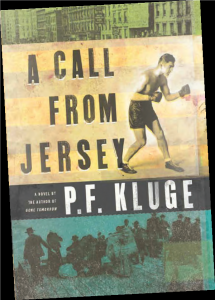 the very nature of estrangement and reconciliation. The Union County hamlet of Berkeley Heights serves as the epicenter for much of A Call from Jersey. Kluge is an unapologetic Jersey Boy with an intimate understanding of the suburban landscape. The story, much of it set in the 1980s, stretches across generations and cultures—and occasionally through the Holland Tunnel—to connect a father and son so preoccupied with how their lives have turned out that they can barely manage an adult conversation when they’re together. Gentle ironies define this relationship. Hans, a seventy-something German- American, is feeling lost in America. His son, George, is a travel writer capable of describing the exotic and mundane with equal aplomb, yet can’t quite put his finger on exactly where, or even what, “home” is. Kluge, it’s worth noting, is the man who supplied the literary inspiration for a pair of iconic films, Dog Day Afternoon and Eddie and the Cruisers. The former, about a Brooklyn bank robbery gone agonizingly awry, starred Al Pacino, fresh off Serpico and his two Godfather triumphs. The latter, about a fictional 1960s Jersey rock band, probably qualifies as a cult classic; certainly that’s true here in the Garden State. From a storytelling standpoint, the most appealing aspect of Eddie—the book and the film—is how effortlessly the narrative moves between past and present. Kluge utilizes time-shifting to great effect again in A Call from Jersey, transporting readers back to the 1930s in order to cobble together a kind of baseline for his characters. There we meet a young Hans, fresh off the boat from Germany, determined to shed his “greenhorn” label and start an American family. As the gap narrows between Hans and George, both timewise and relationship-wise, the author fills in the pertinent details to set up the surprise finish. The most distinctive aspect of A Call from Jersey is how comfortable Kluge is in his two different skins. The book is narrated in the first person, but alternates between Hans and George. The pressure of getting it right for two characters, says Kluge, is outweighed by the advantages of writing in multiple voices. “When you are writing, you are faced with that choice between first and third person,” he explains. “The first person is attractive to young writers because you can put a lot of yourself into the persona of the narrator. That’s fine, except there are certain places you can’t go. You can’t ‘play the field’—you’re a little bit stuck with that one person. The third person offers a larger palette, but you are at a distance from the characters.” “I like the idea of alternating first person narrators, though it’s not without problems. The voices have to be persuasive and can’t be too much alike. That challenged me, but I like it when it works. It combines the advantages of first and third person.” As Kluge’s two main characters stumble toward a long-neglected father-son reunion, they also pursue reunions of their own. George, feeling lost in his late 30s, is staring down the barrel of his 20th with that familiar mix of expectation and anxiety. Kluge, it is worth noting, is headed toward his 50th reunion this fall. In his case, it’s a not-insignificant trip from Gambier, Ohio, where he is Writer in Residence at Kenyon College. “The reason I faithfully attend my high school reunions is to see how lives are turning out,” he explains. “It’s what writers do. At a certain point, elements of competition, appearance and accomplishment dominate reunions. But over time it mellows out. You just want to stare at people and remember and connect. Reunions are about wanting to belong to that same bunch you had in the beginning. Or what’s left of it.”
the very nature of estrangement and reconciliation. The Union County hamlet of Berkeley Heights serves as the epicenter for much of A Call from Jersey. Kluge is an unapologetic Jersey Boy with an intimate understanding of the suburban landscape. The story, much of it set in the 1980s, stretches across generations and cultures—and occasionally through the Holland Tunnel—to connect a father and son so preoccupied with how their lives have turned out that they can barely manage an adult conversation when they’re together. Gentle ironies define this relationship. Hans, a seventy-something German- American, is feeling lost in America. His son, George, is a travel writer capable of describing the exotic and mundane with equal aplomb, yet can’t quite put his finger on exactly where, or even what, “home” is. Kluge, it’s worth noting, is the man who supplied the literary inspiration for a pair of iconic films, Dog Day Afternoon and Eddie and the Cruisers. The former, about a Brooklyn bank robbery gone agonizingly awry, starred Al Pacino, fresh off Serpico and his two Godfather triumphs. The latter, about a fictional 1960s Jersey rock band, probably qualifies as a cult classic; certainly that’s true here in the Garden State. From a storytelling standpoint, the most appealing aspect of Eddie—the book and the film—is how effortlessly the narrative moves between past and present. Kluge utilizes time-shifting to great effect again in A Call from Jersey, transporting readers back to the 1930s in order to cobble together a kind of baseline for his characters. There we meet a young Hans, fresh off the boat from Germany, determined to shed his “greenhorn” label and start an American family. As the gap narrows between Hans and George, both timewise and relationship-wise, the author fills in the pertinent details to set up the surprise finish. The most distinctive aspect of A Call from Jersey is how comfortable Kluge is in his two different skins. The book is narrated in the first person, but alternates between Hans and George. The pressure of getting it right for two characters, says Kluge, is outweighed by the advantages of writing in multiple voices. “When you are writing, you are faced with that choice between first and third person,” he explains. “The first person is attractive to young writers because you can put a lot of yourself into the persona of the narrator. That’s fine, except there are certain places you can’t go. You can’t ‘play the field’—you’re a little bit stuck with that one person. The third person offers a larger palette, but you are at a distance from the characters.” “I like the idea of alternating first person narrators, though it’s not without problems. The voices have to be persuasive and can’t be too much alike. That challenged me, but I like it when it works. It combines the advantages of first and third person.” As Kluge’s two main characters stumble toward a long-neglected father-son reunion, they also pursue reunions of their own. George, feeling lost in his late 30s, is staring down the barrel of his 20th with that familiar mix of expectation and anxiety. Kluge, it is worth noting, is headed toward his 50th reunion this fall. In his case, it’s a not-insignificant trip from Gambier, Ohio, where he is Writer in Residence at Kenyon College. “The reason I faithfully attend my high school reunions is to see how lives are turning out,” he explains. “It’s what writers do. At a certain point, elements of competition, appearance and accomplishment dominate reunions. But over time it mellows out. You just want to stare at people and remember and connect. Reunions are about wanting to belong to that same bunch you had in the beginning. Or what’s left of it.”
Editor’s Note: A Call from Jersey was published by The Overlook Press in September 2010. The author’s previous novel, Gone Tomorrow, was named one of the best books of 2008 by NPR.
“On this weekend night, folks everywhere are toasting one another. Servers sashay around the dining spaces briskly and purposefully as the evening promises to crescendo every 15 minutes.”
A private room just off the entrance to Boulevard Five72 is set for a large party. Plates, glasses and votives sit pert on a long banquet table. As we’re shown to our  “}e21`perch in the L-shaped first-floor dining room, a table for 10 catty-corner from ours is being readied for guests. Before long, on our other side, a few tables are being pushed together by the busy floor crew. I ask a server how many will be in that party. He shrugs and says, “Either 10 or 12. We’ll find out when they get here.” Party Central in Kenilworth. Boulevard Five72 is fit for celebrations and, on this weekend night, folks everywhere are toasting one another. Servers sashay around the dining spaces briskly and purposefully as the evening promises to crescendo every 15 minutes. Everyone and everything is dressed for the occasion. Approach the restaurant, which sits stately on the main thoroughfare that lends its name to Boulevard Five72, and you might think it looks something like a French chateau. Inside, there’s a bit of a French provincial feel to the décor, dominated by shades of beige and wood tones. It’s an appropriately restful backdrop to the constant-motion dining scene. Snag a bottle of wine from the list and settle in. Chef-partner Scott Snyder’s menu is amenable to almost anything you might be in the mood for. I’d suggest going for one of the value-priced red wines from Spain and letting it do-si-do with the fava bean ravioli nestled in a rustic rabbit ragout. It’s the standout dish on the menu of the moment at Boulevard Five72—a partnership of stalwarts from the south of France that have long earned their stripes at the table. Snyder finishes the starter with an ethereal pouf of truffle scented mascarpone that provides yet another flavor bridge from rabbit to fava to pasta. Or you might consider the crab cake, which here comes accompanied by a coarse chop of a salsa, starring chickpeas
“}e21`perch in the L-shaped first-floor dining room, a table for 10 catty-corner from ours is being readied for guests. Before long, on our other side, a few tables are being pushed together by the busy floor crew. I ask a server how many will be in that party. He shrugs and says, “Either 10 or 12. We’ll find out when they get here.” Party Central in Kenilworth. Boulevard Five72 is fit for celebrations and, on this weekend night, folks everywhere are toasting one another. Servers sashay around the dining spaces briskly and purposefully as the evening promises to crescendo every 15 minutes. Everyone and everything is dressed for the occasion. Approach the restaurant, which sits stately on the main thoroughfare that lends its name to Boulevard Five72, and you might think it looks something like a French chateau. Inside, there’s a bit of a French provincial feel to the décor, dominated by shades of beige and wood tones. It’s an appropriately restful backdrop to the constant-motion dining scene. Snag a bottle of wine from the list and settle in. Chef-partner Scott Snyder’s menu is amenable to almost anything you might be in the mood for. I’d suggest going for one of the value-priced red wines from Spain and letting it do-si-do with the fava bean ravioli nestled in a rustic rabbit ragout. It’s the standout dish on the menu of the moment at Boulevard Five72—a partnership of stalwarts from the south of France that have long earned their stripes at the table. Snyder finishes the starter with an ethereal pouf of truffle scented mascarpone that provides yet another flavor bridge from rabbit to fava to pasta. Or you might consider the crab cake, which here comes accompanied by a coarse chop of a salsa, starring chickpeas  with a cameo of fruit. The punchline of the appetizer? A flash of sriracha sauce, moderated by avocado. As I ate, I thought there’d be nothing wrong with giving that hot-fun sriracha more of a chance to dance around the plate: Between the sweetness of the crab and the earthiness of the chickpeas, the dish has the foundation to stand up to more heat. Go for it. Shrimp punctuate a chunky corn chowder that benefits from a trio of compelling accents: smoky bacon, celery root and a touch of turnip. It’s a solid soup—one worth exploring all summer long—as Snyder and his kitchen crew riff on the shellfish and switch around the accenting vegetables to stay in season. One vegetable I wish they’d switch out is the red flannel hash that’s made from
with a cameo of fruit. The punchline of the appetizer? A flash of sriracha sauce, moderated by avocado. As I ate, I thought there’d be nothing wrong with giving that hot-fun sriracha more of a chance to dance around the plate: Between the sweetness of the crab and the earthiness of the chickpeas, the dish has the foundation to stand up to more heat. Go for it. Shrimp punctuate a chunky corn chowder that benefits from a trio of compelling accents: smoky bacon, celery root and a touch of turnip. It’s a solid soup—one worth exploring all summer long—as Snyder and his kitchen crew riff on the shellfish and switch around the accenting vegetables to stay in season. One vegetable I wish they’d switch out is the red flannel hash that’s made from 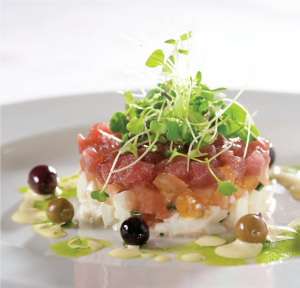 beets and plated with the grilled salmon. The grainy mustard and pesto-like spinach purée adds spot-on counterpoints to the moist fish, but the root vegetable clashes with the salmon. A basic strip loin, meanwhile, showed the kitchen’s precision, and the rich reduction of red wine swirled on the plate was all the steak needed. But a haystack of onions that looked more frizzled than frittered, as the menu described, proved an amiable companion, so we gobbled it all up. Why not? Steak and onions are a heavenly marriage. As are shellfish and arborio, the basis for Boulevard Five72’s risotto. It’s heavy on the truffle in its lobster broth, which I know draws applause from a multitude of
beets and plated with the grilled salmon. The grainy mustard and pesto-like spinach purée adds spot-on counterpoints to the moist fish, but the root vegetable clashes with the salmon. A basic strip loin, meanwhile, showed the kitchen’s precision, and the rich reduction of red wine swirled on the plate was all the steak needed. But a haystack of onions that looked more frizzled than frittered, as the menu described, proved an amiable companion, so we gobbled it all up. Why not? Steak and onions are a heavenly marriage. As are shellfish and arborio, the basis for Boulevard Five72’s risotto. It’s heavy on the truffle in its lobster broth, which I know draws applause from a multitude of  diners impressed by the presence of extreme luxury. I’m a little less drawn to the use of truffle oil than most; I think it overwhelms shellfish, in particular, keeping its unique character in the closet. We added character to our entrées in the form of two sides well worth the supplement. Spanish chips are one of the planet’s most enjoyable foods. Here the thick-cut potato slices are crisp and crunchy and judiciously dusted with pimenton and salt. Good greens are spiced just right—and right for just about any of Boulevard Five72’s entrées. My suggestion re the greens? Serve with a wedge of lemon to give diners the option of adding a little zing as desired. There’s citrus aplenty in the steamed pudding cake, an elegant finale served with a side of blackberry sorbet. An updated strawberry shortcake was underscored by a faint drop of balsamic vinegar and partnered with a creamy, subtle basil gelato. A favorite at my table was the dark chocolate-caramel tart, with its delightful sprinkling of fleur de sel and a cloud of mascarpone mousse offered as a finishing flourish. As we wound down our dinner, servers were gearing up for yet another large-party table. Amid all the activity, you might notice a slight slow-down between appetizers and main courses, and maybe your entrée plates are left to sit a tad too long after you’ve set down knife and fork. But the crew, largely, performs admirably. The crescendos continue at Boulevard Five72. EDGE
diners impressed by the presence of extreme luxury. I’m a little less drawn to the use of truffle oil than most; I think it overwhelms shellfish, in particular, keeping its unique character in the closet. We added character to our entrées in the form of two sides well worth the supplement. Spanish chips are one of the planet’s most enjoyable foods. Here the thick-cut potato slices are crisp and crunchy and judiciously dusted with pimenton and salt. Good greens are spiced just right—and right for just about any of Boulevard Five72’s entrées. My suggestion re the greens? Serve with a wedge of lemon to give diners the option of adding a little zing as desired. There’s citrus aplenty in the steamed pudding cake, an elegant finale served with a side of blackberry sorbet. An updated strawberry shortcake was underscored by a faint drop of balsamic vinegar and partnered with a creamy, subtle basil gelato. A favorite at my table was the dark chocolate-caramel tart, with its delightful sprinkling of fleur de sel and a cloud of mascarpone mousse offered as a finishing flourish. As we wound down our dinner, servers were gearing up for yet another large-party table. Amid all the activity, you might notice a slight slow-down between appetizers and main courses, and maybe your entrée plates are left to sit a tad too long after you’ve set down knife and fork. But the crew, largely, performs admirably. The crescendos continue at Boulevard Five72. EDGE

Boulevard Five72 572 Boulevard, Kenilworth 908.709.1200 Dining hours: Lunch, from 11:30 a.m. to 3 p.m. Tuesday through Friday; dinner, from 5 to 10 p.m. Monday through Thursday, 5 to 11 p.m. Friday and Saturday, 4 to 8 p.m. Sunday. Brunch is served Sundays from 11 a.m. to 3 p.m. All major credit cards accepted. Appetizers range from $14 to $16, with salad and soups in the $9-to-$12 range, entrees $22 to $38 and sides $5 to $7. Desserts are $8.
Tank Girl
A (Saltwater) Fish Story Finding Nemo is not the problem. Keeping Nemo alive is.

How many finny lives are upon my head? As a writer and editor of reference books, magazine articles and web pages on the care and feeding of all manner of aquatic life, how many kids did I help to take that final, fatal step after Disney had entranced them with Finding Nemo? How many gazillion brave little Clownfish lives were sacrificed in the service of a silly fad…and what was my part in it? It breaks my heart. Even more distressing is the fact that I may be in the minority. The pet industry, with which I have been entangled, like fishing line around the foot, professionally as an aquatics editor the past 20 years (and personally as a hobbyist for over fifty), does not profit from our successes. It’s a paradox, and perhaps it carries a larger message to our critical selves:

Photo by Matt Wittenrich, courtesy of Jeff Turner Reef Aquaria Design
The industry that supplies the livestock and equipment for people who would like to enjoy a small slice of the coral reef in their homes and offices profits from the woes and disappointments of the average beginning aquarium fish hobbyist—particularly in the marine fish and invertebrate hobby. Does the average Joe (or Joanne) starting a saltwater tank stand a fighting chance? The short answer is Yes. The long answer is that keeping a successful marine aquarium is equal parts difficult and satisfying. I am here to tell you that it can be done…as long as you’re willing to keep your eyes and wallet open, and understand how this hobby actually works. I offer the following nuggets of wisdom to help the budding “tank girl” (or boy) build a foundation for success. • Captive-bred specimens are recommended for beginners in marine aquarium keeping, regardless of the species desired. Captive-bred animals are hardier, acclimated to aquarium living, and are virtually disease-free. Also, if your pet shop is selling captive-bred stock, you can generally assume that they actually give a hoot about the environment. • More expensive fish are generally in better shape than bargains. At the grocery store, wild-caught fish are more expensive and worth it. That’s because you are eating them. But in a good pet store, it’s the captive-bred fish that are more expensive. It’s counter-intuitive, I know, but please buy the expensive fish. In the end, the dead fish is the most expensive one of all. • The biology of the coral reef is as complicated as it is achingly beautiful. The ability to duplicate the ocean’s floor is a skill that comes with dedication, experience, and a whole lot of reading and working with other like-minded people. An honest pet industry professional will find some way to convey this point to you. A hard-nosed one won’t. That’s because the pet industry counts on the great turnover in hobbyists. All those glass boxes at garage sales represent money down the drain for overwhelmed or under-informed owners…and countless tiny lives flushed away. • Patience, patience and more patience. Don’t become a statistic. Start slow and keep it simple. Is it too much to ask that people not buy their first saltwater aquarium along with the fishes, live rock, and invertebrates all on their first visit to a pet shop? I experiment constantly, and found the very best aquarium I ever kept was limited to live rocks for a whole year before I put any fish in. I always tell my friends to “grow something” in the water first. No matter how many products are available to help start aquariums quickly, the aquarist’s best friend starting out is time. • Patronize the local brick & mortar pet shop and—I’ll say it again—beware of bargains. Even though it may not be able to compete with Internet prices, your local pet shop was likely opened as a labor of love and expertise; these folks are looking to make a living, not a fortune. Pet shop insiders will be the most generous of people with their time, experience, and good advice. However, be aware of the fishmonger who repeats whatever it is you just said, who agrees with a wayward premise. (Yeah! I always feed live guppies to all my cichlids.) If the advice smells like a bucket of week-old dead fish, this is what you’ll probably have next week if you buy from this guy. I only thank my lucky stars that Clownfish are now being commercially farmed at facilities like the ORA hatchery complex in Ft. Pierce, Florida and need not be collected from the wild. Had Nemo been an equally adorable Banggai Cardinalfish, collection pressures on the small wild populations would definitely have put this species at serious risk, even though it too is able to be bred in captivity; just not enough to supply the demand for fish that a movie like Nemo would generate. Although some of us in the industry wrestle with our consciences, in the end we believe that every person who begins a saltwater aquarium—regardless of the outcome— gains new respect and appreciation for our delicate planet. I can’t think of any other exercise that shows us in such acute detail just how difficult it can be to keep a small being living under our care. Perhaps if more people dedicated themselves to maintaining flourishing saltwater tanks, the Gulf of Mexico would still support a shrimping industry, global warming would be addressed in a more proactive way, and we would realize that the line between the coral reefs of Fiji and the Arthur Kill can be an astoundingly fine one. EDGE
Is it too much to ask that people not buy their first saltwater aquarium along with the fishes, live rock, and invertebrates all on their first visit to a pet shop? I experiment constantly, and found the very best aquarium I ever kept was limited to live rocks for a whole year before I put any fish in. I always tell my friends to “grow something” in the water first. No matter how many products are available to help start aquariums quickly, the aquarist’s best friend starting out is time. • Patronize the local brick & mortar pet shop and—I’ll say it again—beware of bargains. Even though it may not be able to compete with Internet prices, your local pet shop was likely opened as a labor of love and expertise; these folks are looking to make a living, not a fortune. Pet shop insiders will be the most generous of people with their time, experience, and good advice. However, be aware of the fishmonger who repeats whatever it is you just said, who agrees with a wayward premise. (Yeah! I always feed live guppies to all my cichlids.) If the advice smells like a bucket of week-old dead fish, this is what you’ll probably have next week if you buy from this guy. I only thank my lucky stars that Clownfish are now being commercially farmed at facilities like the ORA hatchery complex in Ft. Pierce, Florida and need not be collected from the wild. Had Nemo been an equally adorable Banggai Cardinalfish, collection pressures on the small wild populations would definitely have put this species at serious risk, even though it too is able to be bred in captivity; just not enough to supply the demand for fish that a movie like Nemo would generate. Although some of us in the industry wrestle with our consciences, in the end we believe that every person who begins a saltwater aquarium—regardless of the outcome— gains new respect and appreciation for our delicate planet. I can’t think of any other exercise that shows us in such acute detail just how difficult it can be to keep a small being living under our care. Perhaps if more people dedicated themselves to maintaining flourishing saltwater tanks, the Gulf of Mexico would still support a shrimping industry, global warming would be addressed in a more proactive way, and we would realize that the line between the coral reefs of Fiji and the Arthur Kill can be an astoundingly fine one. EDGE
Editor’s Note: Mary Ellen Sweeney is the ultimate Tank Girl—a lifelong hobbyist and a razor-sharp writer and editor for aquatics magazine, books and web sites. 28
Me and My Elephant
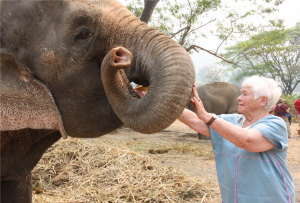 As a child I had no interest in Nancy Drew, or Jo of Little Women. Pippi Longstocking had yet to appear, but even had she arrived a few decades sooner, I’m sure I would have ignored her as well. For me, the very center of my imaginary world was Toomai the Elephant Boy. Toomai of the Elephants was just one of Rudyard Kipling’s marvelous contributions to childhood. Along with millions of other children in any of 70 languages, I was hooked by the Just So Stories in general, by Toomai in particular. Toomai who bullied his elephant. Who shouted commands and stamped his bare foot when his elephant dared not to obey him on the instant.
As a child I had no interest in Nancy Drew, or Jo of Little Women. Pippi Longstocking had yet to appear, but even had she arrived a few decades sooner, I’m sure I would have ignored her as well. For me, the very center of my imaginary world was Toomai the Elephant Boy. Toomai of the Elephants was just one of Rudyard Kipling’s marvelous contributions to childhood. Along with millions of other children in any of 70 languages, I was hooked by the Just So Stories in general, by Toomai in particular. Toomai who bullied his elephant. Who shouted commands and stamped his bare foot when his elephant dared not to obey him on the instant.  Atop his elephant, Toomai rode fearlessly through the jungles of India. Together, child and beast were impervious to all authority of his elders. Toomai and his elephant. The stuff of dreams! So it was that when I first read about Patara Farm in Thailand—and its program entitled “Own an Elephant for a Day”—I knew I had no choice. Patara Farm is located about an hour’s jeep ride outside of Chiang Mai in Northern Thailand. The owner of the farm and the inspiration for the program is a soft-spoken, 37-year-old conservationist, named Theerapat Trungprakan. (“Please, just call me Pat.”) My day of elephant ownership begins in the cool of the morning. Along with seven other would-be elephant owners (groups are limited to eight), I arrive at the 100-acre property carved out of lush woodlands and tropical verdure. Patara is home for Pat, his wife, Dow, three very young sons and 28 elephants. It’s a huge undertaking. To help him, Pat has a staff of 18 local boys, one of whom leads us from the road where our jeeps were parked, along an improvised narrow boardwalk, across a stretch of marsh to a thatched shelter, where Pat greets us. Every inch the attentive host, Pat ushers us to seats on hand-hewn benches. As we help ourselves to fruits and juices, he introduces himself and his life’s work, beginning by sketching for us the story of how elephants were domesticated 2,500 years ago in India, where they were first captured in the wild, tamed and trained. Generation after generation of these massive mammals were bred for docility, agility and robust health. The art—and what an art it is!—of training an elephant for a lifetime of productive work was handed down, father-to-son, and about 500 years ago was passed from India to Thailand. Pat tosses in a few elephant facts: An elephant has a life span of 60 to 70 years.
Atop his elephant, Toomai rode fearlessly through the jungles of India. Together, child and beast were impervious to all authority of his elders. Toomai and his elephant. The stuff of dreams! So it was that when I first read about Patara Farm in Thailand—and its program entitled “Own an Elephant for a Day”—I knew I had no choice. Patara Farm is located about an hour’s jeep ride outside of Chiang Mai in Northern Thailand. The owner of the farm and the inspiration for the program is a soft-spoken, 37-year-old conservationist, named Theerapat Trungprakan. (“Please, just call me Pat.”) My day of elephant ownership begins in the cool of the morning. Along with seven other would-be elephant owners (groups are limited to eight), I arrive at the 100-acre property carved out of lush woodlands and tropical verdure. Patara is home for Pat, his wife, Dow, three very young sons and 28 elephants. It’s a huge undertaking. To help him, Pat has a staff of 18 local boys, one of whom leads us from the road where our jeeps were parked, along an improvised narrow boardwalk, across a stretch of marsh to a thatched shelter, where Pat greets us. Every inch the attentive host, Pat ushers us to seats on hand-hewn benches. As we help ourselves to fruits and juices, he introduces himself and his life’s work, beginning by sketching for us the story of how elephants were domesticated 2,500 years ago in India, where they were first captured in the wild, tamed and trained. Generation after generation of these massive mammals were bred for docility, agility and robust health. The art—and what an art it is!—of training an elephant for a lifetime of productive work was handed down, father-to-son, and about 500 years ago was passed from India to Thailand. Pat tosses in a few elephant facts: An elephant has a life span of 60 to 70 years.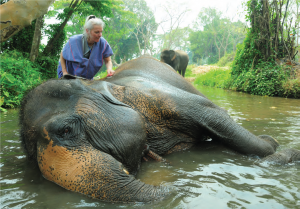 Female elephants often give birth right up through the age of 50. A newborn weighs in at about 260 pounds, delivered after 22 months of gestation. A full-grown elephant can weigh as much as 11,000 pounds and will stand as high as 10 feet at the shoulder. Elephants are herbivores, who every day pack away 350 to 400 pounds of plant material. Sugar cane and bananas rank high on their list of Favorite Foods. As we listen, we gaze out into the surrounding woodlands, where elephants stroll by at their leisure, thoughtfully munching untidy mouthfuls of shrubbery. The warm, moist air carries a strong animal musk. It smells marvelous. It bespeaks nature unbounded. Nature in the raw; somehow it conveys an elemental certainty. It’s as if, however briefly, we are transported beyond the trivia, the excess and, yes, the absurdity of human events into a realm of uncorrupted truth. To call Pat impassioned on the subject of elephants is a massive understatement. His understanding of these extraordinary animals is exceeded only by the love and respect he bears them. He tells us that there was a time when elephants roamed vast areas of Asia and Africa— before man made fire, before man stood upright, before farmers farmed. Their numbers were legion.
Female elephants often give birth right up through the age of 50. A newborn weighs in at about 260 pounds, delivered after 22 months of gestation. A full-grown elephant can weigh as much as 11,000 pounds and will stand as high as 10 feet at the shoulder. Elephants are herbivores, who every day pack away 350 to 400 pounds of plant material. Sugar cane and bananas rank high on their list of Favorite Foods. As we listen, we gaze out into the surrounding woodlands, where elephants stroll by at their leisure, thoughtfully munching untidy mouthfuls of shrubbery. The warm, moist air carries a strong animal musk. It smells marvelous. It bespeaks nature unbounded. Nature in the raw; somehow it conveys an elemental certainty. It’s as if, however briefly, we are transported beyond the trivia, the excess and, yes, the absurdity of human events into a realm of uncorrupted truth. To call Pat impassioned on the subject of elephants is a massive understatement. His understanding of these extraordinary animals is exceeded only by the love and respect he bears them. He tells us that there was a time when elephants roamed vast areas of Asia and Africa— before man made fire, before man stood upright, before farmers farmed. Their numbers were legion.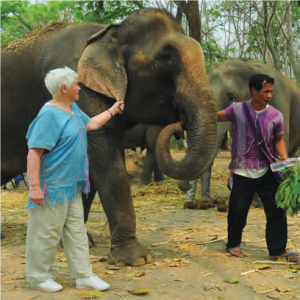 Today, it is estimated that in the whole world there are probably no more than 52,000 left in the wild. Every passing year sees their numbers decline. Where once they were used as beasts of burden, as transport, as invaluable aids in forestry, in heavy labor of every kind, today they are used only in ceremonial pageants and in a few instances as tourist attractions. “In 20 years, maybe less, elephants could become extinct. Except in a zoo, they will cease to exist.” Pat pauses, then resumes. “Extinction,” he tells us, “is forever.” He turns and we read those very words on the back of his bright red Tshirt. Each of us is paired up with an elephant. Ours for the day. I’m introduced to Nui, a 14-year old female. Tethered by one massive leg she stands in the shade of a giant mango tree. I approach with delight generously mixed with total ignorance. Meet a dog, hold out your open palm. Meet a horse, speak softly, move slowly, stroke the neck and muzzle. But meet an elephant? Toomai, help me! I reach up and run my hand over the crinkly skin.
Today, it is estimated that in the whole world there are probably no more than 52,000 left in the wild. Every passing year sees their numbers decline. Where once they were used as beasts of burden, as transport, as invaluable aids in forestry, in heavy labor of every kind, today they are used only in ceremonial pageants and in a few instances as tourist attractions. “In 20 years, maybe less, elephants could become extinct. Except in a zoo, they will cease to exist.” Pat pauses, then resumes. “Extinction,” he tells us, “is forever.” He turns and we read those very words on the back of his bright red Tshirt. Each of us is paired up with an elephant. Ours for the day. I’m introduced to Nui, a 14-year old female. Tethered by one massive leg she stands in the shade of a giant mango tree. I approach with delight generously mixed with total ignorance. Meet a dog, hold out your open palm. Meet a horse, speak softly, move slowly, stroke the neck and muzzle. But meet an elephant? Toomai, help me! I reach up and run my hand over the crinkly skin. Surprise! It’s covered with short, black, bristly hairs that are all but invisible unless you’re standing very close. She’s so big that even on tiptoe I can hardly reach higher than her eyes. By way of introduction I feed her about 20 pounds of corn cobs and sugarcane stalks provided by Tang, one of Pat’s helpers. It’s a tricky business, because each offering has to be poked directly into her mouth, which is obstructed by her trunk which curls and uncurls in unpredictable ways. “Good Nui,” I tell her, “good girl,” forgetting that though English is my language, her language is Thai. As the sun climbs toward the zenith of noon, Pat shows us how to command our elephants to lie down in order to sweep their backs free of dirt, leaves and twigs with a fistful of palm fronds. Once tidied up, I offer Nui the palm fronds, which she consumes in a single messy mouthful. Bath time! The approved technique by which one moves one’s elephant out from under a mango tree down to the river some 200 yards away consists of taking a firm grip on the edge of one ear and telling her “My-my-my-my,” the Thai word for “Come.” Slowly but surely, we progress to the river’s edge. There I release my hold, step aside and Nui wades in to join the other seven elephants. It’s playtime. With much swooshing and spraying, much splashing and squirting, all the elephants—along with their owners-for-the day—have a watery free-for-all.
Surprise! It’s covered with short, black, bristly hairs that are all but invisible unless you’re standing very close. She’s so big that even on tiptoe I can hardly reach higher than her eyes. By way of introduction I feed her about 20 pounds of corn cobs and sugarcane stalks provided by Tang, one of Pat’s helpers. It’s a tricky business, because each offering has to be poked directly into her mouth, which is obstructed by her trunk which curls and uncurls in unpredictable ways. “Good Nui,” I tell her, “good girl,” forgetting that though English is my language, her language is Thai. As the sun climbs toward the zenith of noon, Pat shows us how to command our elephants to lie down in order to sweep their backs free of dirt, leaves and twigs with a fistful of palm fronds. Once tidied up, I offer Nui the palm fronds, which she consumes in a single messy mouthful. Bath time! The approved technique by which one moves one’s elephant out from under a mango tree down to the river some 200 yards away consists of taking a firm grip on the edge of one ear and telling her “My-my-my-my,” the Thai word for “Come.” Slowly but surely, we progress to the river’s edge. There I release my hold, step aside and Nui wades in to join the other seven elephants. It’s playtime. With much swooshing and spraying, much splashing and squirting, all the elephants—along with their owners-for-the day—have a watery free-for-all.  Pat and his helpers provide us with buckets and scrub brushes; when our charges lie down, we are shown how to baste them and scrub them, an exercise which Nui and I enjoy in equal measure. At last, my Toomai moment arrives! It’s time to climb on board. Pat demonstrates four different ways of handling it. As I recall, Toomai would say the word and his elephant would wrap his trunk around him and lift him onto his head. But that method is not included in the four styles we are shown. I choose what appears to be the easiest and in so doing, I find there is no “easy” (much less “easiest”). Still, I make it onto Nui’s head by standing on her curled front leg and hauling myself up by shamelessly using her ear as a handhold. Once seated, Toomai-like, I tuck my bare feet one foot behind each ear, and speak the magic words that Nui clearly understands. It’s “Sai” for left and “Kwa” for right. We fall into parade formation and, with Pat in the lead, we make our way, slowly and stately, through a mile or so of woodlands from which we emerge in a glen into which tumbles a sparkling waterfall—the perfect antidote for Thailand’s torrid temperatures. A delectable picnic lunch of unidentifiable Thai dishes has been laid out for us atop layers of banana leaves. While we set to, our elephants gambol in the water, shooting trunksful of water at each other, not caring one whit if they soak their owners in the process. It’s late afternoon by the time we make our way back to Patara Farm. I’m soaked, exhausted, exhilarated. Nui and I have bonded. She kneels down so I can slither off her and in farewell I stroke her trunk, whispering endearments. “Lah gorn, Nui” I tell her. Remembering my Kipling, I know full well that Nui will never forget me. It goes without saying that I will never forget Nui. We bid Pat farewell. Our group heads for the jeeps and I think to myself, Well, Toomai, at long last, I made it! EDGE
Pat and his helpers provide us with buckets and scrub brushes; when our charges lie down, we are shown how to baste them and scrub them, an exercise which Nui and I enjoy in equal measure. At last, my Toomai moment arrives! It’s time to climb on board. Pat demonstrates four different ways of handling it. As I recall, Toomai would say the word and his elephant would wrap his trunk around him and lift him onto his head. But that method is not included in the four styles we are shown. I choose what appears to be the easiest and in so doing, I find there is no “easy” (much less “easiest”). Still, I make it onto Nui’s head by standing on her curled front leg and hauling myself up by shamelessly using her ear as a handhold. Once seated, Toomai-like, I tuck my bare feet one foot behind each ear, and speak the magic words that Nui clearly understands. It’s “Sai” for left and “Kwa” for right. We fall into parade formation and, with Pat in the lead, we make our way, slowly and stately, through a mile or so of woodlands from which we emerge in a glen into which tumbles a sparkling waterfall—the perfect antidote for Thailand’s torrid temperatures. A delectable picnic lunch of unidentifiable Thai dishes has been laid out for us atop layers of banana leaves. While we set to, our elephants gambol in the water, shooting trunksful of water at each other, not caring one whit if they soak their owners in the process. It’s late afternoon by the time we make our way back to Patara Farm. I’m soaked, exhausted, exhilarated. Nui and I have bonded. She kneels down so I can slither off her and in farewell I stroke her trunk, whispering endearments. “Lah gorn, Nui” I tell her. Remembering my Kipling, I know full well that Nui will never forget me. It goes without saying that I will never forget Nui. We bid Pat farewell. Our group heads for the jeeps and I think to myself, Well, Toomai, at long last, I made it! EDGE
Editor’s Note: Linda Stewart is a syndicated travel writer whose stories appear in national magazines and newspapers. For more information on Patara Elephant Farm, log onto pataraelephantfarm.rom or telephone 081.992.2551.
Nothing to Sneeze At
Dealing with dander can be a matter of life and death
Dogs may qualify as man’s best friend, but they won’t do you any favors if you’re among the estimated 10 percent of Americans who have animal-related allergies. That means your allergic antibodies—aka immunoglobulin E—have declared pet dander and saliva as enemies of the state. The casualty list in this epic, microscopic battle being waged within your body includes a runny nose, scratchy throat, watery eyes, itchy hives and, in the most serious cases, a potentially lifethreatening asthma attack. “Pet dander can activate cells in the immune system,” confirms Samuel D. Kahnowitz, MD, FCCP, FACP, Chief of Pulmonary Medicine and Medical Director of Respiratory Therapy at Trinitas Regional Medical Center. “The body then makes inflammatory substances that constrict the muscles around the airway, and cause swelling on the inside of the airways, making it harder to breathe.” Reactions to pet allergies account for an increasing number of doctor and emergency room visits in this country, so the medical community is taking this trend seriously. To a layman, at least, the obvious question is, “Has pet dander somehow gotten ‘worse’ or are people becoming more sensitive to it?” Actually the same question could be asked about our food and environment—allergies in general seem to be more prevalent, and more serious, than ever. It turns out that we may be the problem. Indeed studies suggest that our country’s obsession with cleanliness may be to blame for creating hypersensitive immune systems, which now react to harmless things around us. “Our environment has improved, so we don’t have to worry about fighting off dangerous parasites,” explains Richard J. Bukosky, MD, an allergist in Linden. “The allergic antibody doesn’t have a whole lot to do. It starts to ‘pick’ on things that we’re exposed to in the environment that are completely harmless.” While there is still no permanent cure for pet allergies, there are plenty of options available for minimizing their effects on your life—and many of them don’t require finding a new home for Fluffy or Fido: Minimize exposure to pets. The less exposure to the offending pet, the better. Opting to find a new home for your pet may help in the long run, though it can take up to 20 weeks after the pet leaves before the allergen levels really dissipate.
The casualty list in this epic, microscopic battle being waged within your body includes a runny nose, scratchy throat, watery eyes, itchy hives and, in the most serious cases, a potentially lifethreatening asthma attack. “Pet dander can activate cells in the immune system,” confirms Samuel D. Kahnowitz, MD, FCCP, FACP, Chief of Pulmonary Medicine and Medical Director of Respiratory Therapy at Trinitas Regional Medical Center. “The body then makes inflammatory substances that constrict the muscles around the airway, and cause swelling on the inside of the airways, making it harder to breathe.” Reactions to pet allergies account for an increasing number of doctor and emergency room visits in this country, so the medical community is taking this trend seriously. To a layman, at least, the obvious question is, “Has pet dander somehow gotten ‘worse’ or are people becoming more sensitive to it?” Actually the same question could be asked about our food and environment—allergies in general seem to be more prevalent, and more serious, than ever. It turns out that we may be the problem. Indeed studies suggest that our country’s obsession with cleanliness may be to blame for creating hypersensitive immune systems, which now react to harmless things around us. “Our environment has improved, so we don’t have to worry about fighting off dangerous parasites,” explains Richard J. Bukosky, MD, an allergist in Linden. “The allergic antibody doesn’t have a whole lot to do. It starts to ‘pick’ on things that we’re exposed to in the environment that are completely harmless.” While there is still no permanent cure for pet allergies, there are plenty of options available for minimizing their effects on your life—and many of them don’t require finding a new home for Fluffy or Fido: Minimize exposure to pets. The less exposure to the offending pet, the better. Opting to find a new home for your pet may help in the long run, though it can take up to 20 weeks after the pet leaves before the allergen levels really dissipate.  If your dog or cat is here to stay, make sure to keep it out of your bedroom—the place where you spend most of your time—and wash your hands thoroughly after you’ve touched your pet. Weekly bathing or grooming (done by someone other than the person with the allergies) may also help keep allergens at bay. Keep it clean. Daily vacuuming and washing-down of surfaces can help clear some of the allergens—especially if you use a vacuum with a HEPA filter that can trap the tiny particles. Removing carpeting, drapery, stuffed toys and other soft fabrics can help reduce the number of places where pet dander can become trapped. “I really push for them to allergy-proof the bedroom—get rid of the carpeting and the animals, get a dehumidifier and a HEPA filter, avoid down comforters and get allergy-proofing casing for the pillows and mattresses,” Dr. Bukosky says. Consider that it might not be your pet. Even if allergy testing turns up an allergic reaction, it may not actually be your animal that’s causing the wheezing. “Dogs roam around, and it might not be the dog himself—it may be an irritant he’s picking up outside, like wood chips or rag weed,” says Dr. Kahnowitz. Take antihistamines. Newer over-the-counter formulations, like Zyrtec and Claritin, are more potent and less likely to cause drowsiness and other unpleasant side effects. Try a more serious approach. Doctors have become more aggressive in treating allergies, often including steroids in the treatment plan. “We’re pushing steroids more,” Dr. Bukosky says. “We used to use a montelukast (Singulair) a lot, but we’ve started to use inhaled steroids more—for nasal allergies, internasal steroids are a good option.” Of course, pet allergies can also be treated with a program of allergy immunizations. “We push for immunizations, which make it less likely that you’ll develop asthma,” says Dr. Bukosky. The regimens generally start with weekly shots, then as the treatment progresses, patients can go longer and longer between injections. Finally, there’s the do-nothing approach. These are the people who claim they have built an immunity to their animal. Is this really possible? The answer is yes…and no. Dr. Bukosky warns that what these pet owners believe to be happening may not actually be the case. “With daily exposure to the pet, a person with allergies may be having mild allergy-like attacks each day that use up the IgE antibody—just not enough to cause symptoms,” he says. “Then the child goes off to college, or is away from the pet for a long vacation, and has an asthma attack. So you may become ‘used to’ your pet, but you have to be in constant contact with it to avoid a serious reaction.”
If your dog or cat is here to stay, make sure to keep it out of your bedroom—the place where you spend most of your time—and wash your hands thoroughly after you’ve touched your pet. Weekly bathing or grooming (done by someone other than the person with the allergies) may also help keep allergens at bay. Keep it clean. Daily vacuuming and washing-down of surfaces can help clear some of the allergens—especially if you use a vacuum with a HEPA filter that can trap the tiny particles. Removing carpeting, drapery, stuffed toys and other soft fabrics can help reduce the number of places where pet dander can become trapped. “I really push for them to allergy-proof the bedroom—get rid of the carpeting and the animals, get a dehumidifier and a HEPA filter, avoid down comforters and get allergy-proofing casing for the pillows and mattresses,” Dr. Bukosky says. Consider that it might not be your pet. Even if allergy testing turns up an allergic reaction, it may not actually be your animal that’s causing the wheezing. “Dogs roam around, and it might not be the dog himself—it may be an irritant he’s picking up outside, like wood chips or rag weed,” says Dr. Kahnowitz. Take antihistamines. Newer over-the-counter formulations, like Zyrtec and Claritin, are more potent and less likely to cause drowsiness and other unpleasant side effects. Try a more serious approach. Doctors have become more aggressive in treating allergies, often including steroids in the treatment plan. “We’re pushing steroids more,” Dr. Bukosky says. “We used to use a montelukast (Singulair) a lot, but we’ve started to use inhaled steroids more—for nasal allergies, internasal steroids are a good option.” Of course, pet allergies can also be treated with a program of allergy immunizations. “We push for immunizations, which make it less likely that you’ll develop asthma,” says Dr. Bukosky. The regimens generally start with weekly shots, then as the treatment progresses, patients can go longer and longer between injections. Finally, there’s the do-nothing approach. These are the people who claim they have built an immunity to their animal. Is this really possible? The answer is yes…and no. Dr. Bukosky warns that what these pet owners believe to be happening may not actually be the case. “With daily exposure to the pet, a person with allergies may be having mild allergy-like attacks each day that use up the IgE antibody—just not enough to cause symptoms,” he says. “Then the child goes off to college, or is away from the pet for a long vacation, and has an asthma attack. So you may become ‘used to’ your pet, but you have to be in constant contact with it to avoid a serious reaction.”
 Heart attack victims who have pets tend to live longer. Watching fish in a tank can lower blood pressure. In senior adults, canine companionship can keep mental health complications from turning into physical deterioration. Indeed, considerable evidence supports the healing potential of pet therapy. There is plenty of history to back up the power of pet therapy, too. The first documented account of animal therapy dates back to the 9th century in Gheel, Belgium, where farm animals were used to help disabled people cope. In Washington, D.C. in 1919, psychiatric patients at St. Elizabeth’s Hospital had dogs available for their recognized therapeutic value. And in the decades since, the medical community has come to embrace this interactive approach to improving the quality of life, both for patients in recovery and for those whose health may be in decline. For the record, today the more politically correct term for pet-related therapy is either Animal-Assisted Activities (AAA) or Animal-Assisted Therapy (AAT). AAA is a more casual meet-and-greet approach to hands-on contact between patients and pets, while AAT is a more formal clinical approach with patients who may be challenged physically, emotionally, or mentally.
Heart attack victims who have pets tend to live longer. Watching fish in a tank can lower blood pressure. In senior adults, canine companionship can keep mental health complications from turning into physical deterioration. Indeed, considerable evidence supports the healing potential of pet therapy. There is plenty of history to back up the power of pet therapy, too. The first documented account of animal therapy dates back to the 9th century in Gheel, Belgium, where farm animals were used to help disabled people cope. In Washington, D.C. in 1919, psychiatric patients at St. Elizabeth’s Hospital had dogs available for their recognized therapeutic value. And in the decades since, the medical community has come to embrace this interactive approach to improving the quality of life, both for patients in recovery and for those whose health may be in decline. For the record, today the more politically correct term for pet-related therapy is either Animal-Assisted Activities (AAA) or Animal-Assisted Therapy (AAT). AAA is a more casual meet-and-greet approach to hands-on contact between patients and pets, while AAT is a more formal clinical approach with patients who may be challenged physically, emotionally, or mentally.
PAWS FOR HEALTH Among the myriad patient services offered by Trinitas Regional Medical Center is its own Animal-Assisted Activities program, headed by Carol Pepe, Director of Case Management Services. Whether politically correct or not, everyone at Trinitas still calls it the “pet therapy program” and, indeed, this is Pepe’s pet program. She launched it almost five years ago with the approval of a multi-discipline committee of hospital representatives. To date, the AAA program’s success can be measured by the more than 3,700 visits arranged for older inpatients and cancer treatment outpatients. The Trinitas program utilizes dogs only, although many AAAs and AATs involve a variety of animals ranging from cats, birds and horses to more exotic creatures. One, in Thailand, uses elephants. The dog handlers at Trinitas are typically employee volunteers. A volunteer escort is always present, as well, to monitor overall pet–patient interaction. Currently, there are six participating therapy dogs at Trinitas: four males (Winston, Murphy, Buddy and Harley) and two females (Ribbon and Bonnie). Males and females of all breeds, including mixed, are potential candidates. Temperament always trumps sex or bloodlines. Trinitas has a close working relationship with St. Hubert’s Animal Welfare Center in Madison. Through their Paws for People program, St. Hubert’s trains and certifies both dogs and their owners/handlers. All pets are temperament-tested to assure that only appropriately friendly, stable and disciplined dogs make the cut. The owner/handler must attend a three-hour class, and both dog and owner must complete rigorous homework exercises to be certified.
THEY CALL IT PUPPY LOVE Linda Reynolds, Director of the Adult Outpatient Unit in the Department of Behavioral Health and Psychiatry, is in charge of a similar pet therapy program, which she launched only two months ago. Currently, she is the sole owner/handler of a canine “therapist,”  her five-year old beagle, Murphy. Both have been certified by St. Hubert’s. Reynolds recognized early on that Murphy had the necessary qualifications, since he had become an ambassador of goodwill in her own neighborhood, particularly among senior residents. Currently, the psych department’s group sessions are held at Trinitas, with special visits paid to the on-site nursing facility—the domain of Harley, another gifted pet “therapist.” The adult outpatient groups are often organized according to particular challenge. Two of the currently active groups are focusing on anxiety relief and partial vs. unconditional love. Reynolds refers to these sessions as her “puppy love” groups. “I really just knew I had to share him,” Reynolds says of Murphy, who wears a hospital staff photo ID badge, as do all the therapy dogs. It is attached to his favorite bandana; Reynolds realized that Murphy needed a work wardrobe and provided it. Murphy is typically on the job two or three days a month. A typical day includes sessions with two to three groups, each with five to ten patients. Patients are not the only recipients of Murphy’s healing powers. Staff members having a bad day often drop by for a visit and a pet. Murphy is happy to oblige. “No stranger is too strange for Murphy,” Reynolds says.
her five-year old beagle, Murphy. Both have been certified by St. Hubert’s. Reynolds recognized early on that Murphy had the necessary qualifications, since he had become an ambassador of goodwill in her own neighborhood, particularly among senior residents. Currently, the psych department’s group sessions are held at Trinitas, with special visits paid to the on-site nursing facility—the domain of Harley, another gifted pet “therapist.” The adult outpatient groups are often organized according to particular challenge. Two of the currently active groups are focusing on anxiety relief and partial vs. unconditional love. Reynolds refers to these sessions as her “puppy love” groups. “I really just knew I had to share him,” Reynolds says of Murphy, who wears a hospital staff photo ID badge, as do all the therapy dogs. It is attached to his favorite bandana; Reynolds realized that Murphy needed a work wardrobe and provided it. Murphy is typically on the job two or three days a month. A typical day includes sessions with two to three groups, each with five to ten patients. Patients are not the only recipients of Murphy’s healing powers. Staff members having a bad day often drop by for a visit and a pet. Murphy is happy to oblige. “No stranger is too strange for Murphy,” Reynolds says.
JUST SCRATCHING THE SURFACE The immense potential of animal-assisted therapy is particularly clear to Reynolds and Pepe, each of whom has special memories of pet–patient bonding. Pepe recalls one terminally ill patient who related incredibly to Bonnie, spending her last three weeks with regular visits. In Bonnie’s company, the patient was more relaxed and less stressed because there was no need to put on the brave face she did for family members. She even occasionally let Bonnie borrow her wig, which elicited peals of laughter from patient, handler and escort—not to mention Bonnie’s joy at being the center of so much attention. The patient was able to share some smiles and also some tears with Bonnie until the very end. Reynolds remembers a bipolar patient in a group session who had vehemently verbalized her dislike of dogs—which only encouraged Murphy to make friends. He ultimately won her heart and brought a smile to someone who hadn’t smiled in months. Pepe herself underwent surgery two years ago and became an active participant in her own program. The owner of three dogs, she experienced a case of severe pet withdrawal while in-hospital. Through some therapy dog visits, Pepe can now personally attest to the healing comfort that comes from simply petting a friendly, furry, four-legged creature. “We’re in the business of small miracles,” Pepe says. “The dogs bring smiles where before there was only pain.” EDGE
Editor’s Note: Every word you read in EDGE has to go through Christine Gibbs first. This is the first story she has authored for EDGE since joining the staff in 2009. Chris freelanced in the finance, international business and healthcare sectors as a technical writer and editor before coming aboard.
EDGE
interview
Beth Ostrosky Stern
So many questions, so little time. Model. Actress. Activist. Author. To put it mildly, BETH OSTROSKY STERN leads a very interesting life. EDGE Assignments  Editor Zack Burgess managed to grab 20 solid minutes with Beth at the “tail end” of the publicity tour for her new book, Oh My Dog: How to choose, train, groom, nurture, feed and care for your new best friend (Gallery Books). Zack covered a lot of ground in his Q&A, yet he never got to the question Letterman posed to her on national television: Why Howard? Turns out she kind of answered it anyway. The spokesperson for North Shore Animal League America, Beth wouldn’t tell us how her book ends. Spoiler alert…the woman ends up taking care of the dog!
Editor Zack Burgess managed to grab 20 solid minutes with Beth at the “tail end” of the publicity tour for her new book, Oh My Dog: How to choose, train, groom, nurture, feed and care for your new best friend (Gallery Books). Zack covered a lot of ground in his Q&A, yet he never got to the question Letterman posed to her on national television: Why Howard? Turns out she kind of answered it anyway. The spokesperson for North Shore Animal League America, Beth wouldn’t tell us how her book ends. Spoiler alert…the woman ends up taking care of the dog!
EDGE: When did you make that first connection with animals?
BOS: The day I was brought home from the hospital. When I was born, my mother and father had rescued a mutt named Suzy Dog. Right away my older brother and I were taken with her. When my brother, who is 17 months older than me, came home, Suzy Dog was placed in front of him. It was the same for me. She was the first thing I saw when I opened my eyes. We always had animals in our home. We were always rescuing animals. It’s in my blood.
EDGE: How much thought should go into preparing your home and family for an adopted pet? Some say it isn’t that different from preparing for a new child.
BOS: In some respects that’s true. You’re not bringing a human into your home, it’s an animal—let’s just make that clear. But absolutely, you have to assess your lifestyle. Do you work? Do you have a family? Do you have a yard? Do you live in the city? Do you have access to dog walkers? If you travel, do you have people to take care of your dog? All of those things should be lined up and well thought-out before an animal enters your home. I write about that very thoroughly in my book. Whether you adopt a dog or purchase one from a breeder, you have to appreciate that you are in charge of this animal for the next fifteen years. You are essentially the parent of this live being that is needy. It needs to be fed, needs to have a safe place to sleep, and needs to be taken care of.
EDGE: You also write about the importance of bonding. As a celebrity, presumably you have less time to bond with your pets than the average person. So how much time is “enough” time?
BOS: I think anyone who has an animal in his or her life is going to fall in love and make time for that addition. Being a celebrity hasn’t anything to do with it. When you have an animal, you’re committing to that animal. Yes, both my husband’s and my schedules are crazy. But that’s true of a lot of dog owners. You put in the time and make sure there is coverage for when you are not available for their needs. They are a part of your family.
EDGE: In your book you describe the Top 20 breeds and the importance of matching the personalities of dog and owner. What ever happened to the old-fashioned way of picking a dog—love at first sight?
 BOS: I believe in love at first sight. Just know what you’re looking for. Assess your lifestyle, as I mentioned before. When you go into a shelter, if you have a big house with a beautiful yard or access to a park, you might want to get a bigger breed. Or if you live in a one-bedroom apartment, you might not want to get that Rottweiler or Bernese Mountain dog; you might want to go for a smaller dog. Talk to the adoption counselor, determine the right fit for your lifestyle, and then when you spend time with a dog and make eye contact and fall in love, you’re also going to know it’s the right one to bring home.
BOS: I believe in love at first sight. Just know what you’re looking for. Assess your lifestyle, as I mentioned before. When you go into a shelter, if you have a big house with a beautiful yard or access to a park, you might want to get a bigger breed. Or if you live in a one-bedroom apartment, you might not want to get that Rottweiler or Bernese Mountain dog; you might want to go for a smaller dog. Talk to the adoption counselor, determine the right fit for your lifestyle, and then when you spend time with a dog and make eye contact and fall in love, you’re also going to know it’s the right one to bring home.
EDGE: You have been working with the North Shore Animal League for five years now. How did that relationship begin?
BOS: I was modeling in New York City and the booker at my agency asked if I would volunteer my time to model at a fashion show during their annual luncheon. I spent my day walking the runway, modeling gowns with puppies from the North Shore Animal League. I didn’t leave the runway until every animal was adopted! They put two and two together, seeing my passion for animals and realizing that I was the girlfriend of Howard Stern. They asked if I would pose for a newspaper ad for the North Shore Animal League. I said absolutely, and after I saw what they do I began to volunteer regularly. I am so passionate about their mission. It has just been the most rewarding part of my life the last five years.
EDGE: Which is how Oh My Dog came about.
BOS: Yes. People would stop me on the street and ask me questions about their dogs. I had to explain that, although I’m affiliated with animal rescue, I wasn’t an expert on dogs. So I would rush home to my computer and go online. Not only did I quickly learn that there was bogus information on the Internet, I also saw that I was getting ten different answers to every question that I would plug in. Wow! I didn’t know which answer to give people. Then I realized I had such amazing experts at my fingertips. I’m friends with Oprah’s trainer Tamar Geller. I know one of the groomers that was on Groomer Has It. I know these amazing people at the North Shore Animal League. What if I gather all those questions that people have asked me over the years—come up with even more questions—and act as the “host” of a guide filled with their expertise? Oh My Dog ended up being over 500 pages.
EDGE: As a writer, I know one of the hardest things to do is to ask your spouse to read something you’ve written. It’s probably one of the reasons I have an ex-wife. What was that experience like for you?
BOS: I didn’t actually let Howard read the book until it was finished. He knew what chapter I was working on or what outline or interview I was working on, because it took up so much of my time—a year-and-a-half actually. Howard was a loving husband. He supported me and encouraged me every step of the way. I couldn’t have been luckier. I guess I get props for not making him read every page.
EDGE: Did being married to a public figure help or hinder you as the book project moved along?
BOS: I don’t think it made a difference at all.
EDGE: Who could you have not written this book without?
BOS: My dog, Bianca. She was my inspiration. She was beside me, at my side, the entire time that I was working on this project. She was my best friend. She kept me going and drooled on the pages as I was proofing them.
EDGE: The English majors of the world need to know—did all that reading and writing in school pay off when you authored your first book?
BOS: Absolutely. But you know what has really helped me? I’m so grateful that, in high school, we had to take a typing course. I don’t think they offer that anymore. Being able to type very quickly has been my savior. But yes, understanding sentence structure, being used to writing every day—I think that my English Lit background was definitely useful. EDGE
Editor’s Note: Beth Ostrosky Stern is one of the judges on the ABC reality series True Beauty, where contestants think they are vying to become the “face of Las Vegas” but are, in fact, being evaluated on their character. She says she was honored to be chosen as a judge of inner beauty. Zack Burgess is tearing it up as a freelance writer and editor this summer. Look for his upcoming articles in Politics and SLAM magazines. Photo by Christopher Appoldt.
For more and more vets, evaluating pain has become less and less of guessing game
As judgment calls go, it is one of the most difficult in veterinary medicine. A dog in pain can’t speak for itself—we know that—but without accurately gauging the nature and severity of a canine’s discomfort, even the most gifted vets may find themselves at a loss when determining a course of treatment.  Compounding this dilemma is the fact that dogs rarely display the pain they are experiencing at home on a trip to the animal hospital. Their adrenaline is pumping, their senses are under assault, and many experience off-the-charts anxiety—all of which can mask their pain once they hit the examining table. So what’s a vet to do? Keep score. They now can do so thanks to an elegantly simple document called the Canine Brief Pain Inventory (aka CBPI), which was developed at the University Pennsylvania School of Veterinary Medicine. The two-page evaluation sheet contains 11 carefully constructed questions, each of which can be answered on a sliding scale from 1 to 10—not by the doctor or (obviously) the patient, but by the dog owner. The result is a score which, over years of trials, has proven to be remarkably accurate. Why the dog owner? The answer would seem to be a no-brainer. After all, who better to report on a pet’s condition than the person who sees that pet more than anyone? But there’s the rub. The idea of taking what is purely observational data and then translating that into unimpeachable science is not always an easy sell. It’s not weaving straw into gold, mind you, but to some it has a little of that flavor. Not so says the CBPI’s creator, Dr. Dorothy Cimino Brown, Professor and Chief of Surgery at Penn who also has a practice within the university. “There is a whole scientific method surrounding how you build a numbers-based assessment tool from something that is inherently subjective,” she says. “It is a multi-step process during which you develop interview questions and then determine what and how they should be asked, and also how the answers should be recorded. We knew that the signs and behaviors associated with chronic pain in dogs can be non-dramatic, and therefore would be best known by dog owners. That is why we devoted five years and $500,000 on studies and focus groups in order to develop a scientifically reliable instrument.” According to Dr. Brown, there was a lot of tweaking during CBPI’s first two years, and mostly fine-tuning over the last three. Some of the questions to be included seemed obvious to everyone, such as How is your dog hopping into the car or getting upstairs? One development that surprised the researchers was a sleep question. Dogs experiencing pain related to cancer have trouble sleeping, so everyone assumed a sleep question would make the final cut. “It didn’t,” says Dr. Brown. “In building a question about sleep we could never get it to
Compounding this dilemma is the fact that dogs rarely display the pain they are experiencing at home on a trip to the animal hospital. Their adrenaline is pumping, their senses are under assault, and many experience off-the-charts anxiety—all of which can mask their pain once they hit the examining table. So what’s a vet to do? Keep score. They now can do so thanks to an elegantly simple document called the Canine Brief Pain Inventory (aka CBPI), which was developed at the University Pennsylvania School of Veterinary Medicine. The two-page evaluation sheet contains 11 carefully constructed questions, each of which can be answered on a sliding scale from 1 to 10—not by the doctor or (obviously) the patient, but by the dog owner. The result is a score which, over years of trials, has proven to be remarkably accurate. Why the dog owner? The answer would seem to be a no-brainer. After all, who better to report on a pet’s condition than the person who sees that pet more than anyone? But there’s the rub. The idea of taking what is purely observational data and then translating that into unimpeachable science is not always an easy sell. It’s not weaving straw into gold, mind you, but to some it has a little of that flavor. Not so says the CBPI’s creator, Dr. Dorothy Cimino Brown, Professor and Chief of Surgery at Penn who also has a practice within the university. “There is a whole scientific method surrounding how you build a numbers-based assessment tool from something that is inherently subjective,” she says. “It is a multi-step process during which you develop interview questions and then determine what and how they should be asked, and also how the answers should be recorded. We knew that the signs and behaviors associated with chronic pain in dogs can be non-dramatic, and therefore would be best known by dog owners. That is why we devoted five years and $500,000 on studies and focus groups in order to develop a scientifically reliable instrument.” According to Dr. Brown, there was a lot of tweaking during CBPI’s first two years, and mostly fine-tuning over the last three. Some of the questions to be included seemed obvious to everyone, such as How is your dog hopping into the car or getting upstairs? One development that surprised the researchers was a sleep question. Dogs experiencing pain related to cancer have trouble sleeping, so everyone assumed a sleep question would make the final cut. “It didn’t,” says Dr. Brown. “In building a question about sleep we could never get it to  mathematically behave. So we eliminated it. The problem was that not all owners sleep in the same room as their dog, so we dropped it from the inventory.” Brown’s team is pleased with the acceptance of the CBPI within the veterinary community. The form is available on the Internet at no charge, and it already has been downloaded more than 500 times; there is no way to track how often it is emailed or disseminated in other ways. After some initial resistance, the CBPI received glowing reviews in veterinary publications and today companies seeking FDA approval for canine pain medicine are using the CBPI to determine whether a drug is doing what it is supposed to do. Will the CBPI achieve “industry standard” status? From a research standpoint, it’s already a superb one. Considering that many local practitioners don’t use anything—they will ask how a dog is doing, but they don’t quantify it longitudinally—often a change in medication or treatment is based solely on feel. Old dogs can learn new tricks, as can vets who might initially resist an instrument such as the CBPI. From a patient record-keeping standpoint alone, says Dr. Brown, it just makes sense. “We recognize that the idea you can build an objective tool for a subjective situation is something new for veterinarians,” she offers. “But you can’t just pull six questions out of the air and expect to get a real evaluation.” EDGE
mathematically behave. So we eliminated it. The problem was that not all owners sleep in the same room as their dog, so we dropped it from the inventory.” Brown’s team is pleased with the acceptance of the CBPI within the veterinary community. The form is available on the Internet at no charge, and it already has been downloaded more than 500 times; there is no way to track how often it is emailed or disseminated in other ways. After some initial resistance, the CBPI received glowing reviews in veterinary publications and today companies seeking FDA approval for canine pain medicine are using the CBPI to determine whether a drug is doing what it is supposed to do. Will the CBPI achieve “industry standard” status? From a research standpoint, it’s already a superb one. Considering that many local practitioners don’t use anything—they will ask how a dog is doing, but they don’t quantify it longitudinally—often a change in medication or treatment is based solely on feel. Old dogs can learn new tricks, as can vets who might initially resist an instrument such as the CBPI. From a patient record-keeping standpoint alone, says Dr. Brown, it just makes sense. “We recognize that the idea you can build an objective tool for a subjective situation is something new for veterinarians,” she offers. “But you can’t just pull six questions out of the air and expect to get a real evaluation.” EDGE
Editor’s Note: Mark Stewart grabbed this story assignment for selfish reasons. He is the owner of an arthritic collie named Clementine. On his next vet visit, he will have a completed CBPI in hand. Mark also authored New Jersey Plants and Animals and All Around New Jersey: Regions & Resources; both books are now in their second hardcover printings.
In the Garden State, Polo Is a ‘Family Thing’
Thousands of families in suburban New Jersey wake up on summer Sundays to a little something I like to call the eternal struggle. The kids want to kick around in cutoffs and flip-flops. Dad is looking to devote the day to the “competitive spirit” (translation: watch sports). Mom? By the time the sun sets, she would like to feel as if she’s moving forward—psychically and socially— not just treading water. Like most, I once assumed the solution to this Sunday dilemma was unattainable.  And I’m not one to give up easily. I run a business that presents a new twist or challenge on an hourly basis; if I don’t hear someone screaming a four-letter word, I actually worry that something’s wrong. Perhaps that is why my favorite four-letter word is Polo. Yes, I know. We tend to think of polo as an exclusive pastime for those who enjoy the privileges of wealth and influence. And in some parts of the world this is true. But I have experienced firsthand the inclusive side of polo, too— the side that brings people from all walks of life together in a beautiful setting, transforming that sleepy Sunday into a vibrant sporting and social event. Some come to watch the action. Others come to connect with old friends and meet new ones. Big kids come and so do little ones. And a lot of people may not admit it, but they come for the amazing food. The point is that everyone comes. For those interested in business or social networking opportunities, well, obviously that goes on all the time at a polo match. In fact, much like golf, the two are constantly intertwined. Unlike golf, it doesn’t take a mother or father away from home all day. Indeed, I know of no other leisure activity that promotes the family dynamic the way that polo does. And this applies to virtually any family. Families with young children will find plenty to do at a polo match.
And I’m not one to give up easily. I run a business that presents a new twist or challenge on an hourly basis; if I don’t hear someone screaming a four-letter word, I actually worry that something’s wrong. Perhaps that is why my favorite four-letter word is Polo. Yes, I know. We tend to think of polo as an exclusive pastime for those who enjoy the privileges of wealth and influence. And in some parts of the world this is true. But I have experienced firsthand the inclusive side of polo, too— the side that brings people from all walks of life together in a beautiful setting, transforming that sleepy Sunday into a vibrant sporting and social event. Some come to watch the action. Others come to connect with old friends and meet new ones. Big kids come and so do little ones. And a lot of people may not admit it, but they come for the amazing food. The point is that everyone comes. For those interested in business or social networking opportunities, well, obviously that goes on all the time at a polo match. In fact, much like golf, the two are constantly intertwined. Unlike golf, it doesn’t take a mother or father away from home all day. Indeed, I know of no other leisure activity that promotes the family dynamic the way that polo does. And this applies to virtually any family. Families with young children will find plenty to do at a polo match. There are the magnificent ponies to admire, the spotless stables to explore, a variety of kid-friendly activities and, naturally, lots of other young boys and girls. Families with teenagers typically park the car, get a feel for the layout and logistics, and then watch with confidence (and relief) as their sons and daughters fan out on their own—leaving mom and dad to enjoy a civilized afternoon and recharge their batteries for the week ahead.
There are the magnificent ponies to admire, the spotless stables to explore, a variety of kid-friendly activities and, naturally, lots of other young boys and girls. Families with teenagers typically park the car, get a feel for the layout and logistics, and then watch with confidence (and relief) as their sons and daughters fan out on their own—leaving mom and dad to enjoy a civilized afternoon and recharge their batteries for the week ahead.
THE CULTURE The people who gather to watch a polo match tend to have a few things in common. They enjoy good food, engaging conversation and, let’s face it, people-watching. Consequently, you won’t see too many folks wandering around in jeans and a t-shirt. You will see some big hats— hats that are unlikely to be worn anywhere but a polo match. As a rule, polo fans dress neatly and nicely. This includes the kids, who seem amazed that they can actually enjoy themselves without looking like their role models on Jersey Shore. Do you have to be wealthy to attend and enjoy a polo match? No. Polo is an expensive sport to play (just ask my accountants) but, in our area, a season’s pass to a polo club can be had for less than the cost of two tickets to a Yankees game. Are there wealthy people at a polo match? Most definitely. But they are not as easy to pick out as you might think; the old expression, “You can’t judge a book by its cover” often applies here. That’s because it’s not all about the money. It’s about the camaraderie, it’s about the aesthetics, it’s about people who—like the elite athletes out there controlling their powerful animals—are interested in elevating their game. Ultimately, I believe this is what makes polo such an inclusive sport. Truth be told, I encountered far less resistance from people in American polo when I first started getting into the sport in the 1990s than I did when I came to America from Europe as a boy in the 1970s. The real tip-off that there are multimillionaires milling around in the crowd is the number of corporate sponsors splashing their names on an event, and also the high-end jewelers and other retailers who like to display their wares to attendees. They know that there are lots of current and future customers at the match, and they also know that many people only watch some of the action—they come to socialize and shop, too. If you’re in the market for a new car, new jewelry, new wardrobe, new stock broker, new caterer or even a new face, there is a lot to catch your eye away from the field.
THE COMPETITION Lest we forget, polo is a serious sport. It is fast. It is exciting. And it has an element of danger. The athletes in the saddle must perform both as individuals and as members of a team, and they need unbelievable hand-eye coordination. The animal that riders must control is a “pony” in name only—they are full-on horses, four to eight inches taller than the riding ponies at your local stable, and a lot stronger and swifter. They tip the scales at around 1,000 pounds. When they thunder past the spectators, the air crackles with energy. A good polo pony can cost a cool quarter-million dollars or more, and requires up to two years of training before they are ready for competition. They continue to train daily, often twice a day. A polo pony must respond to a rider’s instructions through a variety of one-handed tugs on the reins and subtle weight shifts and leg movements. They are primped and pampered in between matches, but once the action starts they are pushed to their absolute limits. Many first-time polo fans are amazed to see how often a player changes mounts. His string of ponies usually ranges between three and seven. If you’ve ever watched an ice hockey team change lines, then you have some idea of the level of exertion involved. A quality horse can get its rider to the ball. From
The animal that riders must control is a “pony” in name only—they are full-on horses, four to eight inches taller than the riding ponies at your local stable, and a lot stronger and swifter. They tip the scales at around 1,000 pounds. When they thunder past the spectators, the air crackles with energy. A good polo pony can cost a cool quarter-million dollars or more, and requires up to two years of training before they are ready for competition. They continue to train daily, often twice a day. A polo pony must respond to a rider’s instructions through a variety of one-handed tugs on the reins and subtle weight shifts and leg movements. They are primped and pampered in between matches, but once the action starts they are pushed to their absolute limits. Many first-time polo fans are amazed to see how often a player changes mounts. His string of ponies usually ranges between three and seven. If you’ve ever watched an ice hockey team change lines, then you have some idea of the level of exertion involved. A quality horse can get its rider to the ball. From  there, however, it’s up to the player to pass, defend or score. There are four players per side, each with different responsibilities. The point of polo is to work the ball up the field and knock it through a goal that is eight yards wide. The field itself is 300 yards long with tall sideboards to protect the spectators and keep the ball in play. Defense is all about position and timing. A player can thwart an opponent by interfering with his mallet, or by “riding him off” (picture a half-ton bodycheck). For us, polo is a family sport no matter where we are sitting. My great joy is that I now train and compete with my sons, Tyler, Shaun and Jeffrey. I have been working on my polo game for more than a decade and still feel like I’m learning something new every day. Often I am asked about the skill level required to play polo at a world-class level. The truth is that it’s difficult to define. Try hitting a golf ball one-handed on a bicycle at 30 mph without ending up in a heap and you’ll have some idea of the talent and training involved. Better yet, come out to a match this summer. You’ll see…it really is a family thing. EDGE
there, however, it’s up to the player to pass, defend or score. There are four players per side, each with different responsibilities. The point of polo is to work the ball up the field and knock it through a goal that is eight yards wide. The field itself is 300 yards long with tall sideboards to protect the spectators and keep the ball in play. Defense is all about position and timing. A player can thwart an opponent by interfering with his mallet, or by “riding him off” (picture a half-ton bodycheck). For us, polo is a family sport no matter where we are sitting. My great joy is that I now train and compete with my sons, Tyler, Shaun and Jeffrey. I have been working on my polo game for more than a decade and still feel like I’m learning something new every day. Often I am asked about the skill level required to play polo at a world-class level. The truth is that it’s difficult to define. Try hitting a golf ball one-handed on a bicycle at 30 mph without ending up in a heap and you’ll have some idea of the talent and training involved. Better yet, come out to a match this summer. You’ll see…it really is a family thing. EDGE
Editor’s Note: Simon Garber is the owner of the Yellow Cab and SJS Jets polo teams, as well as the Polo Club of Colts Neck. For more information about this summer’s Sunday schedule, log onto poloclubofcoltsneck.com. Special thanks to Dario Garcia and Susan Belfer for their help on this story.







PHOTOGRAPHY BY NADINE RAPHAEL

There’s no trick to taming Botanicals
The icecaps are melting. Wildfires, floods and mudslides dominate the news cycle. The hurricane season is underway. The message is clear: when you trifle with Mother Nature, you do so at your own risk. Lest we forget, she does have her softer, smoother side. Indeed, nothing is more soothing, luxurious, and au courant than embracing botanicals. Indeed, if you know your way around the garden, so to speak, you can put away those space-aged polymers this season and make a triumphant return to nature. Before doing so, keep in mind that not every “botanical” product is worth its weight in aloe. The real-deal botanicals are amped-up, streamlined, and perfected to a T (as in “Tzone”). The following summertime beauty essentials are among the precious few that take natural ingredients to new heights—a place where underground earthiness meets top-shelf luxury. Firstly, let’s clear our palette.
 REN’S GLYCOLACTIC SKIN RENEWAL PEEL MASK ($55 / 1.7 oz.) is a potent bioactive complex that reduces fine lines and improves tone and firmness. This treatment safely and effectively resurfaces the skin without causing irritation. Its four-fruit-acidcomplex (lactic, glycolic, tartaric and citric) and papain enzyme create a gentle-yet-potent exfoliating action, which leaves skin glowing once again. In addition to its obvious aesthetic benefits, Ren’s Peel Mask doesn’t include synthetic fragrances, silicones, synthetic dyes, or petrochemicals, which add a caustic element to an already somewhat harsh treatment. This mask is particularly recommended for congested and mature skin. It works well on post-acne scarring and sundamaged skin. Of course, since it’s a peel, sensitive skin types should be slightly cautious. Now that we’ve got ourselves a fresh canvas, nothing’s more vital to healthy looking skin than hydration. But, don’t be fooled—just because a night cream boasts an olive in the title, doesn’t mean it’s all natural! Several big-name labs throw in shoddy synthetic fragrances but leave out the nourishing organ ics.
REN’S GLYCOLACTIC SKIN RENEWAL PEEL MASK ($55 / 1.7 oz.) is a potent bioactive complex that reduces fine lines and improves tone and firmness. This treatment safely and effectively resurfaces the skin without causing irritation. Its four-fruit-acidcomplex (lactic, glycolic, tartaric and citric) and papain enzyme create a gentle-yet-potent exfoliating action, which leaves skin glowing once again. In addition to its obvious aesthetic benefits, Ren’s Peel Mask doesn’t include synthetic fragrances, silicones, synthetic dyes, or petrochemicals, which add a caustic element to an already somewhat harsh treatment. This mask is particularly recommended for congested and mature skin. It works well on post-acne scarring and sundamaged skin. Of course, since it’s a peel, sensitive skin types should be slightly cautious. Now that we’ve got ourselves a fresh canvas, nothing’s more vital to healthy looking skin than hydration. But, don’t be fooled—just because a night cream boasts an olive in the title, doesn’t mean it’s all natural! Several big-name labs throw in shoddy synthetic fragrances but leave out the nourishing organ ics.
Luckily, in the case of OLE HENRIKSEN’S THREE LITTLE WONDERS, you’re naturally covered, thrice-fold. This triad of products (sold together for an unheard of $70) features the award-winning Truth Serum-Collagen Booster, Sheer 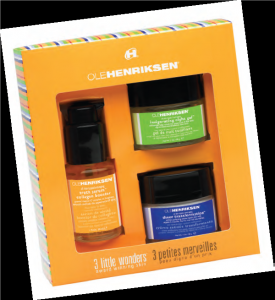 Transformation-Renewing Creme, and Invigorating Night Gel-Firming Treatment. The payoff is truly amazing. Each formulation is oil-free, light in texture, firming, pore-tightening, and promotes uniform pigmentation. Remarkably, this trio is also free of carcinogenic parabens, sulfates, and triclosan. My next recommendation has long been a staple among beauty industry professionals; its natural botanical composition has always taken a backseat to its unbelievable simplistic fine quality.
Transformation-Renewing Creme, and Invigorating Night Gel-Firming Treatment. The payoff is truly amazing. Each formulation is oil-free, light in texture, firming, pore-tightening, and promotes uniform pigmentation. Remarkably, this trio is also free of carcinogenic parabens, sulfates, and triclosan. My next recommendation has long been a staple among beauty industry professionals; its natural botanical composition has always taken a backseat to its unbelievable simplistic fine quality.
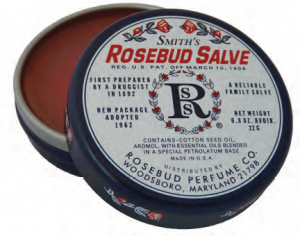 Every girl needs a sweet vernal lip pigment to complement the renewal of dewy skin, which is why ROSEBUD PERFUME’s lip balms and salves are an absolute essential for anyone who plans to be kissed this summer. Touched ever so slightly with the faintest of pink hues (listed here from lightest to darkest), Smith’s Strawberry Lip Balm, Rosebud Salve, and Minted Rose Lip Balms are masterful (and at a price of $6/.8 oz., they’re worth exploring, guilt-free). Each of Rosebud’s products tastes and smells delicious, is free of any and all synthetic additives, and maintains the company’s long-standing policy of no animal testing.
Every girl needs a sweet vernal lip pigment to complement the renewal of dewy skin, which is why ROSEBUD PERFUME’s lip balms and salves are an absolute essential for anyone who plans to be kissed this summer. Touched ever so slightly with the faintest of pink hues (listed here from lightest to darkest), Smith’s Strawberry Lip Balm, Rosebud Salve, and Minted Rose Lip Balms are masterful (and at a price of $6/.8 oz., they’re worth exploring, guilt-free). Each of Rosebud’s products tastes and smells delicious, is free of any and all synthetic additives, and maintains the company’s long-standing policy of no animal testing.
When it comes to organic powders, blushes, and foundations, nobody can hold a candle to BARE ESCENTUALS. Comprised predominantly of all-natural crushed mineral content—and made without preservatives, fragrances, or other skin irritants—Bare Escentuals’ makeup looks like powder but feels like a cream, giving skin a healthy glow. Bare Minerals Blushes ($18/.03 oz.) are available in an array of colors and give a healthy tone that looks natural because, well, it is. Truth be told, the entire line is worth looking into. Bare Escentuals products are completely botanical and ideal for all skin types, including more sensitive complexions—and even those with problem-prone skin. Finally, what summer fling would be complete without a bit of lingering love in the air? 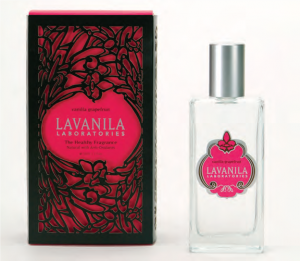
LAVANILA LABORATORIES’ VANILLA GRAPEFRUIT fragrance ($56/1.7 oz.) is flirty frivolity incarnate—a luscious concoction of sparkling grapefruit, fresh lime and warm cedarwood, softened in a base of rich Madagascar vanilla. Can you say Yum? Lavanila combines pure essential oils with active botanicals for natural fragrances that are fresh, clean, and contain two super antioxidants, goji berry and kakadu plum. This summer, what could be better than embracing an earthier, more natural inner beauty? Mother Nature may like to play rough, but it’s her softer side that will keep you looking and feeling flawless from season to season. I highly recommend adding some of these botanicals to your regimen. They’re sure to give you the look, feel and glow of summer all season long. EDGE
Editor’s Note: Dan Brickley is a fashion, beauty and grooming consultant. He hosted TLC’s A Makeover Story.
Okay, let’s be blunt for a moment. When you think “New Jersey Dream Wedding,” that dream doesn’t really end with a two-hour jaunt down the Garden State Parkway. A week on the West Coast? That’s more like it. Ten days in Tokyo? Absolutely. A fortnight in France? Now you’re talking! Alas, the sad fact is that New Jersey couples don’t always have the days to spare for such glittering post-nup adventures. Which is why staying in-state might just be the brightest option of all. It all comes down to picking your spot. Consider if you will that, for thousands of couples from all over the world, Atlantic City is the honeymoon destination.

You know that surge of excitement you feel when you hit the AC Expressway? Imagine adding that to the glow of an impending wedding night. “What could be more romantic than a hotel suite with an ocean view, four miles of beautiful beaches and Boardwalk to stroll on, superior dining choices, luxurious spas and great entertainment?” asks Jeff Vasser. Okay, Mr. Vasser gets paid to plug AC. He’s President of the Convention and Visitors Authority. But the man’s got a point. Combine the indulgent pampering available to honeymooners in this town that’s “Always Turned On” with the opulent casino gambling a mere elevator-ride away, and you’ve got the makings of a winning hand. And wouldn’t you know it? Atlantic City’s top hotels are all over this honeymoon thing.
At the Trump Taj Mahal, for instance, newlyweds can choose between Romantic and Risqué. Each includes an ocean view suite in the gorgeous new Chairman Tower, a bottle of bubbly and, depending on which option they have selected, either a Romance or Risqué Intimacy Kit (contents unknown). “We created these packages to offer our guests an experience they won’t soon forget,” says Trump’s Paula Mauk, who confirms that New Je rsey honeymooners can indeed “get away without going far away.”

Honeymooners at the Borgata tend to gravitate toward the Spa Toccare package. It includes his & her Deep Tissue or Healing Stone Massage and Wild Lime Scalp Treatment, then a Classic Manicure and Plush Pedicure for the bride, and a Signature Shave and Express Pedicure for the groom. All those upper case letters come at a price, of course, but why pinch pennies when you can experience the ultimate in marital decompression? Next door at The Water Club—home of the exquisite topfloor, two-story Immersion pool and spa—there is a couples package on the menu that may just outdo them all. Billed as a traditional retreat to luxury, it includes a Javanese Lulur bath and body ritual that transports lovebirds back to a simpler time (like the 17th century). A side-by-side Balinese massage with jasmine frangipani oils is followed up by exfoliation with tumeric, flowers and fresh yogurt before soaking in a fragrant, floral bath, and then finishing up with an application of jasmine frangipani lotion. The bath ritual is performed in a Couples Suite with unbelievable views. Also included are a poolside manicure and pedicure, and the sublime Immersion lunch, courtesy of Chef Geoffrey Zakarian. The Water Club does not offer gaming, however the concourse connecting it to The Borgata’s casino features a gauntlet of high-end retail establishments where couples can blow their wedding checks long before they reach the tables. For newlyweds looking to hang onto their dough a bit longer, there is The Chelsea, a gambling-free boutique hotel unaffiliated with its neighbors, the Hilton and Tropicana.

There are several packages popular with honeymooners checking into The Chelsea. The details and differences are all explained on the hotel’s web site, but the real story here is the wedding bed and the amazing rooms in the Luxe Tower. Think Egyptian cotton sheets, fluffy white duvet, and an endless supply of pillows. Think awe-inspiring views from a deck and sunroom featuring floor-to-ceiling windows. And while you’re at it, think about shelling out a couple of extra bills for one of the penthouse suites (it’s worth every penny). Finally, all of the Luxe Tower rooms at The Chelsea come with lots of whimsical touches to remind guests how very far away they are from the rest of us poor devils…even though they haven’t left the state.
Don’t be misled by the racy cover slugs on your favorite supermarket magazines.
Solving tricky “bedroom problems” is not the exclusive domain of sex columnists.
For countless millions of troubled couples, the answer isn’t the art of love, but the art of placement.
AHong Kong-based movie director sought to smooth his turbulent marriage by trading in his traditional king-sized bed for one with rounded corners. All in the spirit of taking the edge off the relationship. In California, parents of four daughters in their twenties painted each of their bedrooms peach, a color the Chinese associate with romance and flirtation. To ensure future wedding bells. Having trouble in your marriage? Still looking for that special someone with whom to share your life? Do you sleep like a baby—a colicky one? Are you restless when you should be resting, waking up in the morning jumpy and nervous? Do you suffer from constant headaches or stomach cramps? Before contacting your local couples counselor, sleep specialist or gastroenterologist, consider this: your bedroom might be suffering from bad feng shui.
Feng shui, the ancient Chinese art of placement, addresses the environment to achieve peace, harmony and tranquility. In a bedroom, a delicate balance must be struck between serenity and suggestiveness. Calming aspects are desirable and contribute to sweet, langorous slumber, but in a marriage or relationship, desire and intimacy also need to be stoked. We spend one-third of our lives in our bedroom, where we rest, relax and recharge our energies. No wonder that, to the modern feng shui expert, the bedroom is one of the most important areas of your home. Indeed, for thousands of years, the Chinese have believed that where you sleep will influence how you sleep—that the structure and layout of your bedroom can affect your well being. When arranging a bedroom, certain ancient Chinese principles should be employed: the flow of ch’i (which translates as “energy”), the balance of yin and yang, and the wholeness of tao (which translates as the “way of nature”). Common and uncommon sense also are invaluable. In a bedroom, to the Chinese, position is an important consideration—of the bed location, that is. Ideally the bed should be cater-corner to the room’s entrance, with a view of the door so that you can comfortably see anyone entering and not be surprised. This position is called the commanding position; it gives you a sense of control over your environment. A poorly placed bed may disrupt your sleep at night and make you edgy and unbalanced during the day. Given that the ideal bed-to-door relationship is not always possible, the best cure is to hang a mirror in a way that reflects the door toward you as you lie in bed. In some cases, a bed lies between two opposing windows, so a draft blows continually, disturbing sleep. This can be cured by hanging wind chimes, a crystal, or light between the windows, thus symbolically disbursing the draft.

“Whether you’re looking for a little luck or just hoping
to get lucky, a little feng shui can go a long way.”
Avoid locating your bed under a load-bearing beam. If it runs down the center, it will be divisive to a married couple. One couple in Manhattan rarely slept together an entire night. The wife always got up in the middle of the night and slept in the guest bedroom. Her midnight rambling ended after they moved the bed out from underneath the beam.
Similarly, avoid having a beam running over your stomach or you may experience cramps and intestinal problems. A newer aspect to modern feng shui deals with all the senses—including lighting and tactile elements—in creating a romantic environment. While a good, bright light is fine for reading in bed, a softer light or pleasantly scented candle will enhance the romantic mood. Deep, slow music is also conducive to intimacy. In addition, silky, velvety fabrics create comfort and help fan the flames of love. Carpets that feel good under foot are preferable to hard sisals or cold wood floors.

Color also is important in a bedroom. While you should always select the colors you love, it’s worth noting that pink is best for romance. Light green and pale blue are also good, as they symbolize hope and development. And peach may be the way to go if you’re still in search of that special someone. Finally, it’s worth mentioning the importance of purging your bedroom of any keepsakes or reminders of failed relationships. Keep it positive. Flowers and happy images are far more effective at creating an atmosphere conducive to a happy connection. Indeed, whether you’re looking for a little luck or just hoping to get lucky, a little feng shui can go a long way.
Editor’s Note: Sarah Rossbach is the author of Feng Shui: The Art of Chinese Placement, which was described by The New York Times as the “bible of the practice.”
“Campos can cook. His superior technical skills are made clear through the fine chop of a tartare and the ethereal texture of a near-weightless crepe.”
Lorena’s defines intimate. You enter, through a slip of a passageway, a dining room that seats but 32. Tables are small, space between them is at a premium, but there’s never a feeling of claustrophobia. No, instead a wall of windows swathed in dark sage fabric expands the diminutive space. Large, brightly colored paintings bring joy and festivity to the scene. Not that Lorena’s needs any help infusing happiness into the world. It’s a love story, an ode from chef Humberto Campos, Jr. to Lorena Perez, the woman who inspired the restaurant that has, in spite of its size, anchored a particularly chic stretch of downtown Maplewood for almost five years. The romance of this husband-wife team plays out every night dinner is served, with Lorena gracefully orchestrating the doings of the dining room, while Humberto works a kitchen fitted with fewer accoutrements than offered in most suburban McMansions. This is one of those fairy-tale ending restaurants: Boy meets girl, boy and girl share a dream, boy and girl make the dreams of couples looking to celebrate special nights come true as a matter of course. You’d spend your dinner here sighing under the spell of this story if the food didn’t interrupt your revelry.

And the food is pure pleasure. Campos can cook. His superior technical skills are made clear through the fine chop of a tartare and the ethereal texture of a near-weightless crepe. His ability to let an ingredient strut its stuff is evident in the perfectly cooked simplicity of a piece of cod set against a backdrop of humble lentils. His quiet confidence is on display in an elegant cup of divine, unadorned ice cream. Fuss happens in the selection of those ingredients, in the focus on prep, in the concentration it takes to turn from pan to plate an exquisite composition that never befuddles the diner. All the while Lorena Perez is quietly orbiting the dining room—directing a floor crew that misses not a dropped napkin, a dirtied knife or a subtle cue from a table ready to move on to the next course—Campos is mirroring his wife’s front-of-the-house grace in his compact kitchen. The French-influenced, modern American fare quickly becomes the topic of conversation at the tables. The briskness of sake and the punch of wasabi are almost elusive in a starter of raw Scottish salmon chopped as fine as an infant’s fingernail, then punctuated by pops of tobiko and served with a wisp of crème fraiche and a crisp, fried wonton.
The Far East gets a visit from the Continent, and they reach an accord. Campos gives a similar twist to homemade cavatelli, tossing the pasta with shreds of duck so tender, so inherently rich, that it mimics confit, then adds the crunch of blanched snow peas to the mix along with a sprinkling of sharp sheep’s milk cheese. That crepe may look weak-kneed, but it’s got the strength to hold ample jumbo-lump crab—shellfish so sweet that you understand immediately why the chef sought balance with earthy wild mushrooms. Given a swirl of puréed herbs, the first-course dish charms. The cod made me jealous. Sure, Campos secured an extra thick center cut of the fish. He has at his disposal an amped-up, professional stove that rocks at higher temperatures than mine. He probably doesn’t hold back when doling out butter, either. I’d cooked cod at my home the night before and Campos’s version made me want to enter culinary school at the nursery level. Remedial class. This cod, with its barely cooked interior and lightly seared edges, found soulmates in French lentils, pert and forest green, and an all-luxe parsnip purée. It was a plate composed of nothing but accomplished elements.

Wild-caught Arctic char kept pace. A lot like salmon, a little like trout, char isn’t often seen wild in these parts. Campos treats the rare find right, partnering it with wild rice, zesty and bold pickled red onion, then adds dried fruits as a backdrop. Though it may not remain on the menu as Lorena’s shifts through spring into foods more suitable for warmer weather, the short ribs are a classic to revisit as soon as the temperatures again suit. Resolutely beefy and tender, they’re riddled with caramelized onion, sided by an uber-buttery purée of potatoes and given a shot in the arm by riffs of Roquefort, a potent cheese that actually tamps down the richness of the dish. My friends sniffed when I ordered the bread pudding for dessert. Such a sophisticated, polished restaurant. So much romance in the air. Why go boarding school at a time like this? Because, they soon learned, Campos starts with eggy-yet-airy brioche, moistens it with banana, gives it the kick of peanut butter (of all things), then finishes the very grand finale with maple-licked caramel sauce and vanilla ice cream. There’ll be competition over this one. As well as for the precise warm chocolate cake, a compact disc that wasn’t a smidgen too sweet and took a serious likin g to an accompanying swirl of raspberry purée. I took a liking to the homemade ice creams, and appreciated the sheer correctness of the chocolate ice cream and the intense citrus flavor in the orange sorbet. You don’t need to hit a diner over the head with frills and frou-frou to impress.
Which sums up Lorena’s, where the food and the scene are all heart.
Keeping a marriage on track takes hard work and an open mind. The obstacles are unrelenting. The rewards sometimes seem few and far between. Money, job stress, child rearing and personal growth (or lack thereof) are among the big-picture challenges. Just as vexing are all the little conflicts that must be resolved merely to stay focused on moving the relationship forward. Then one day you wake up, look at your mate and wonder, “Do I really know this person?” Or worse, “Do I really know myself?” The good news is that successful couples find a way to muddle through and come out stronger on the other side. As a rule, they learn to divide their stress load as time and circumstances dictate. However, they make sure to deal with the “big stuff” as a team. This strategy is vitally important when facing the health issues that crop up as couples age. Almost every family will have to deal with a major illness at some point. How couples get through it can depend as much on their teamwork as it does on their doctors. That is why the medical field is placing increasing emphasis on providing the highest quality information and support to patient and spouse long before the physical healing process even begins.

“Patients’ emotional stability is as important as their physical well being, which is why—if and when possible—they should embark on this journey with their significant other,” says Alan P. Krieger, MD, whose patients include men undergoing prostate cancer treatment. “Couples should absolutely go through the initial steps together. Both need to understand what’s going to happen, and that works best when the doctor is able to meet both patient and partner.” Indeed, where once spouses were spared the unpleasant details of a surgical procedure—and as a result were unprepared to deal with the aftermath—now full disclosure is a crucial part of recovery.
That begins with understanding the options. For instance, most people understand that hysterectomies are performed for several reasons (ranging from unusual conditions such as ovarian carcinoma to something relatively common, such as irregular bleeding or pelvic pain). Yet they have no idea how many ways this procedure can be performed. At Trinitas Regional Medical Center, many operations—including prostate surgery and hysterectomies—are now done with the da Vinci robotic surgical system. “Good vision and maneuverability translates into more precision and a faster recovery for the patient,” says Kamran Khazaei, MD, FACOG. “The da Vinci lets surgeons see in high-definition. And by using the robotic arms with both hands, we are able to perform very delicate procedures. In many cases where patients used to need four or five days to recover, they are walking and eating the next day. In the more aggressive surgeries, recovery has been reduced from weeks to days.”
Not all cases can be addressed robotically, Khazaei cautions, ovarian cancer being one example. Likewise, not all options involve surgery. “You have to cater to each patient individually,” he says. “With medications. Injections. Therapy. As physicians, our job is to treat our patients in the least invasive way possible.” “In issues related to menopause,” he adds, “we are sensitive to the fact that women experience it, but also that men deal with it. We look for ways to keep both parties sane.” Sanity also comes into play with another medical issue that has become increasingly common among couples: Obesity. The patients treated by Joao A. Lopes, MD, and Muhammad S. Feteiha, MD, FACS, often are at the end of their rope. After years of yo-yo dieting and deteriorating health, they want to discuss a surgical option, either a gastric bypass or a gastric band. Lopes can quote the statistics on both procedures chapter and verse. Bypass patients achieve around 80 percent of the weight they anticipated losing, while band patients drop about 40 percent. That easily outweighs the option of doing nothing.

Those who fail to address their obesity in a substantial way (through diet, exercise, surgery or a combination of the three) are 300 times more likely to die 15 years earlier than people who keep their weight under control. The number that impresses Lopes most, however, is that more than 70 percent of the patients he sees come in as couples. “Success depends greatly on the understanding and support of partners and spouses,” he says. “It helps tremendously to have someone encouraging your new lifestyle, exercising with you and taking part in the process. A husband or wife must take part in their new eating behavior and move toward healthier types of foods.” As with most medical procedures, sorting through the options as a couple is the first step in a successful outcome. In the case of a band or bypass, knowing what has to happen afterwards is just as crucial. “Bariatric surgery patients really have to understand the new diet and what they’re getting into in terms of the process after surgery,” says Lopes. “The support of a spouse is tremendous, and we have a bariatric coordinator here in the office to help. Basically, we get through it together.” To help support his recovering patients, Dr. Krieger actually started the first New Jersey chapter of Us TOO, which counsels prostate cancer survivors and their partners. “My main goal is to cure the cancer,” he says, “but a key part of the recovery is for couples to know how they can work together to improve their lives and their relationship.”
Editor’s Note: Rachel Rutledge is EDGE’s ace Editorial Assistant. Lisa Milbrand, who usually writes our Healthy Edge feature, conducted the interviews for this story.
New Jerseyans will argue endlessly about who prepares the finest seafood, grills the best veal chop, rolls the best sushi and spins the best pizza. One of the few things we can agree on is who makes the best wedding cakes—not just in the Garden State, but possibly in the world. BUDDY VALASTRO is the Cake Boss.
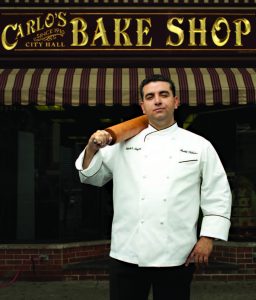
The Hoboken maestro has transformed Carlo’s Bakery from a neighborhood treasure into an international institution with a little help from cable network TLC. With two seasons under its belt, Cake Boss claims millions of viewers and is one of the most popular shows in the TLC lineup. EDGE caught up with Buddy in Los Angeles, where he was filming summer promos for the network. It’s a rare day when he’s not running the show at Carlo’s. He’s been the boss since he followed in his father’s footsteps at the age of 17.
EDGE: What is the secret to creating a great wedding cake?
BV: My success has always come from listening to the bride, to the mom, or whoever has input on the cake. I ask a lot of questions. What’s the season? What’s the theme? What’s on the menu? What type of flowers? What do the invitations look like? Can I see the wedding dress? Once I see all that, I can make decisions about the direction I want to go in. Of course, it’s got to be delicious and it’s got to be something out of the ordinary. I always have to come up with new things.
EDGE: Is it mom or daughter that does the deciding?
BV: Either the mom is in charge of the whole thing, or the daughter will say, “Shut up, it’s my wedding and we’re doing it my way.” It’s about fifty-fifty.
EDGE: What percentage of your clients come to you with a clear idea of what they want, as opposed to your having to nudge them in one direction or another?
BV: I would say sixty-five percent you’ve got to nudge. Thirty-five percent know.
EDGE: Should brides-to-be come armed with pictures of what they want?
BV: It helps to do your homework. Look through bridal magazines and surf the Internet for ideas. You might pick out a cake that only needs to have a couple of things changed on it. As a rule, the more input you give your baker, the easier it is to get a great cake. Also, do your homework on the baker. Check out their track record. Ask how they are going to deliver the cake. Do they have a refrigerated truck, or are they gonna throw it in the back of a Toyota?
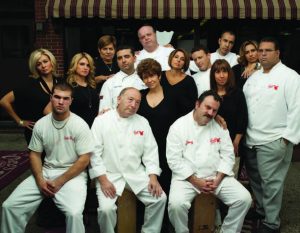
EDGE: How much physics and engineering is involved in building a multi-tiered cake? Is there a height above which you can’t go?
BV: If it’s a tiered cake, no. Gravity comes into play when there is an elaborate sculpture. Sometimes that can be problematic. But a regular tiered cake is no problem. For the boarding in between we use a special type of Masonite instead of cardboard. We use plastic tubes between the tiers. Years ago, I decided I just didn’t want to “fix” cakes anymore. I devised a system, and now, structurally, my cakes are second to none. I’d rather spend a little extra money and a little extra time to know they’re going to get through the wedding okay.
EDGE: Is there a wedding cake the Cake Boss won’t do?
BV: I try not to back down from a challenge, so we don’t say no too often. However, sometimes you get a client and you know they’re going to be really difficult. Some people you aren’t going to make happy no matter what you do, so you have to be big enough to understand and accept that. In those cases, I’m likely to say I don’t have the availability to do the cake.
EDGE: Okay, is there a wedding cake you can’t do—one that’s physically impossible?
BV: Not for the Cake Boss. You say it can’t be done? Hey, that’s what we do.
EDGE: I’m picturing a cake in the shape of the bride and groom—sort of like the topper on a cake becomes the cake itself.
BV: We’ve done a lot of modeling on wedding cakes, but never anything like that. But hey, if you pay, I’ll play!
EDGE: When you start a cake, do you know exactly how it’s going to turn out?
BV: Yes. I can close my eyes and picture what it’s going to look like. Very few times does that vision fail. That comes with experience. I’ve been doing this a long time. I’ve done thousands and thousands of wedding cakes. In the beginning, when I was learning, I’d experiment with different techniques. I might have to redo the same cake ten times. Eventually, I learned how to get a cake exactly how I wanted it the first time.
EDGE: Every time a Cake Boss episode airs, thousands of people say I could do that or I want to do that. How long before someone can turn out a decent wedding cake? What’s involved in working your way up the top?
BV: I’ll tell you the truth. I’ve done it my whole life; I can do it blindfolded. That makes me a bad example, because when I do it, it looks easy. It takes at least a couple of years of doing fifty wedding cakes a week to where you feel you can do anything. To get to the caliber of cakes that I make, you’re talking five to ten years. And we do anywhere from sixty to eighty wedding cakes a week.

EDGE: Does that guarantee they’ll be great wedding cake makers?
BV: To be honest, there are people who are artistic and, conceptually, they can do it. They could take a cake that’s iced and stacked and do beautiful things with it. But they don’t know how to ice and stack it. You have to be able to do the whole thing.
EDGE: And baking’s hardly a “feel” profession.
BV: No, it’s not. Baking is a science. It’s a science.
EDGE: Is it a challenge being a Hoboken institution and a national television personality?
BV: I’ve never forgotten who I am or where I came from. I feel bad for my local patrons who can’t get in the bakery as easily now. So I’m working on that. And I feel bad for my fans, who can’t get my cakes because I work in New Jersey. I’m working on that too.







